Teški tekstovi


The Golden Gate Bridge was only a far-fetched idea before the 1900s. The name Golden Gate, which refers to the channel between the two peninsulas where the city of San Francisco and Marin County face each other, is a narrow and turbulent body of water at the entrance to San Francisco Bay. In the early 1800s, when what is now San Francisco was the small village of Yerba Buena, tank boats provided passage across this narrow strait to the wealthy few who could afford this mode of transportation. As tiny Yerba Buena grew into the bustling city of San Francisco, there was a need for improved transportation across the channel. By 1868, there was regular ferry service for workers who lived in Marin County, and the notion of a bridge to span the channel was being circulated.
Spanning the gap between the idea and a feasible plan took time and determination. In 1916, the San Francisco Bulletin proclaimed that it was time to "bridge the Gate," and a feasibility study of the idea was undertaken by the government. Joseph Strauss, a well-known builder of bridges, took up the challenge after World War I and submitted his plan in 1921. The War Department granted the land for the project, Strauss was elected head engineer, and then Strauss's plan was approved by the War Department after the War Department was convinced that there would be a large enough differential between the water level and the bridge for tall ships to be able to get through.
The strategy for financing the bridge was to sell bonds to raise the whopping $35 million needed for the project and then repay the bonds with tolls from the bridge. A major hurdle to cross was to get the voters behind the financial plan. To win the voters' support, the district promised to hire only local workers with at least one year of residency, a suggestion that was extremely popular during the era of the Great Depression. The plan passed with a whopping majority; with the financial issue resolved, official construction of the Golden Gate Bridge began on January 5th, 1933.
Completion of the bridge was celebrated with a parade and groundbreaking ceremonies. At these ceremonies, a telegram of congratulations from President Hoover was read to the exuberant crowd, and the University of California at Berkeley unveiled an 80-foot model of the bridge constructed by its engineering students. To spread the wonderful news to the whole state, 250 pigeons were let loose to carry the message of the birth of the Golden Gate Bridge.

The atmosphere of Mars is 95 percent carbon dioxide, nearly three percent nitrogen, and nearly two percent argon with tiny amounts of oxygen, carbon monoxide, water vapor, ozone, and other trace gases. Atmospheric pressure on Mars changes with season. In the fall and winter at the poles of Mars, the temperature gets so low that carbon dioxide snows out of the atmosphere and forms meters-thick deposits of dry ice on the surface.
In the springtime as the surface warms up, the dry ice evaporates back into the atmosphere. The atmospheric pressure also varies with altitude just as it does here on Earth and is about ten times lower on the top of Olympus Mons than on the floor of Hellas Planitia. Even though the Martian atmosphere contains very little water vapor, clouds and frosts form on Mars and have been studied in detail by telescopes and spacecraft. Wave clouds, spiral clouds, clouds formed near topographic obstacles such as volcanoes, wispy cirrus-like clouds, and a wide variety of hazes and fogs have all been observed. Along with the dust storms and related clouds described above, these features all reveal the Martian atmosphere to be quite dynamic.
Studies indicate that the atmosphere of Mars was much thicker long ago than it is now. A thicker atmosphere would have been able to trap more solar heat, possibly allowing the surface to warm up to the point where water could have remained liquid for long periods of time. Scientists do not know, however, what the composition of this thicker atmosphere was, and where it went. They theorize that it may have been driven off in a catastrophic impact event, or that the gases reacted with water and got trapped in rocks and minerals on the surface. Scientists also wonder where the liquid water that formerly existed at the surface went.
Some astronomers believe that it seeped into the ground and is still there as ice in the subsurface today. Others think that it may have evaporated and slowly trickled off into space as sunlight broke apart the water vapor molecules over long periods of time. Determining the history of the Martian atmosphere and finding out whether sizable quantities of water still exist there are among the most important goals of Mars exploration today.

Today, bicycles are elegantly simple machines that are common around the world. Many people ride bicycles for recreation, whereas others use them as a means of transportation. The first bicycle, called a draisienne, was invented in Germany in 1818 by Baron Karl de Draisde Sauerbrun. Because it was made of wood, the draisienne wasn’t very durable nor did it have pedals. Riders moved it by pushing their feet against the ground.
In 1839, Kirkpatrick Macmillan, a Scottish blacksmith, invented a much better bicycle. Macmillan’s machine had tires with iron rims to keep them from getting worn down. He also used foot-operated cranks, similar to pedals, so his bicycle could be ridden at a quick pace. It didn’t look much like the modern bicycle, though, because its back wheel was substantially larger than its front wheel. Although MacMillan's bicycles could be ridden easily, they were never produced in large numbers.
In 1861, Frenchman Pierre Michaux and his brother Ernest invented a bicycle with an improved crank mechanism. They called their bicycle a vélocipède, but most people called it a “bone shaker” because of the jarring effect of the wood and iron frame. Despite the unflattering nickname, the vélocipède was a hit. After a few years, the Michaux family was making hundreds of the machines annually, mostly for fun-seeking young people. Ten years later, James Starley, an English inventor, made several innovations that revolutionized bicycle design. He made the front wheel many times larger than the back wheel, put a gear on the pedals to make the bicycle more efficient, and lightened the wheels by using wire spokes. Although this bicycle was much lighter and less tiring to ride, it was still clumsy, extremely top-heavy, and ridden mostly for entertainment.
It wasn’t until 1874 that the first truly modern bicycle appeared on the scene. Invented by another Englishman, H. J. Lawson, the safety bicycle would look familiar to today’s cyclists. The safety bicycle had equal-sized wheels, which made it much less prone to toppling over. Lawson also attached a chain to the pedals to drive the rear wheel. By 1893, the safety bicycle had been further improved with air-filled rubber tires, a diamond-shaped frame, and easy braking. With the improvements provided by Lawson, bicycles became extremely popular and useful for transportation. Today, they are built, used, and enjoyed all over the world.
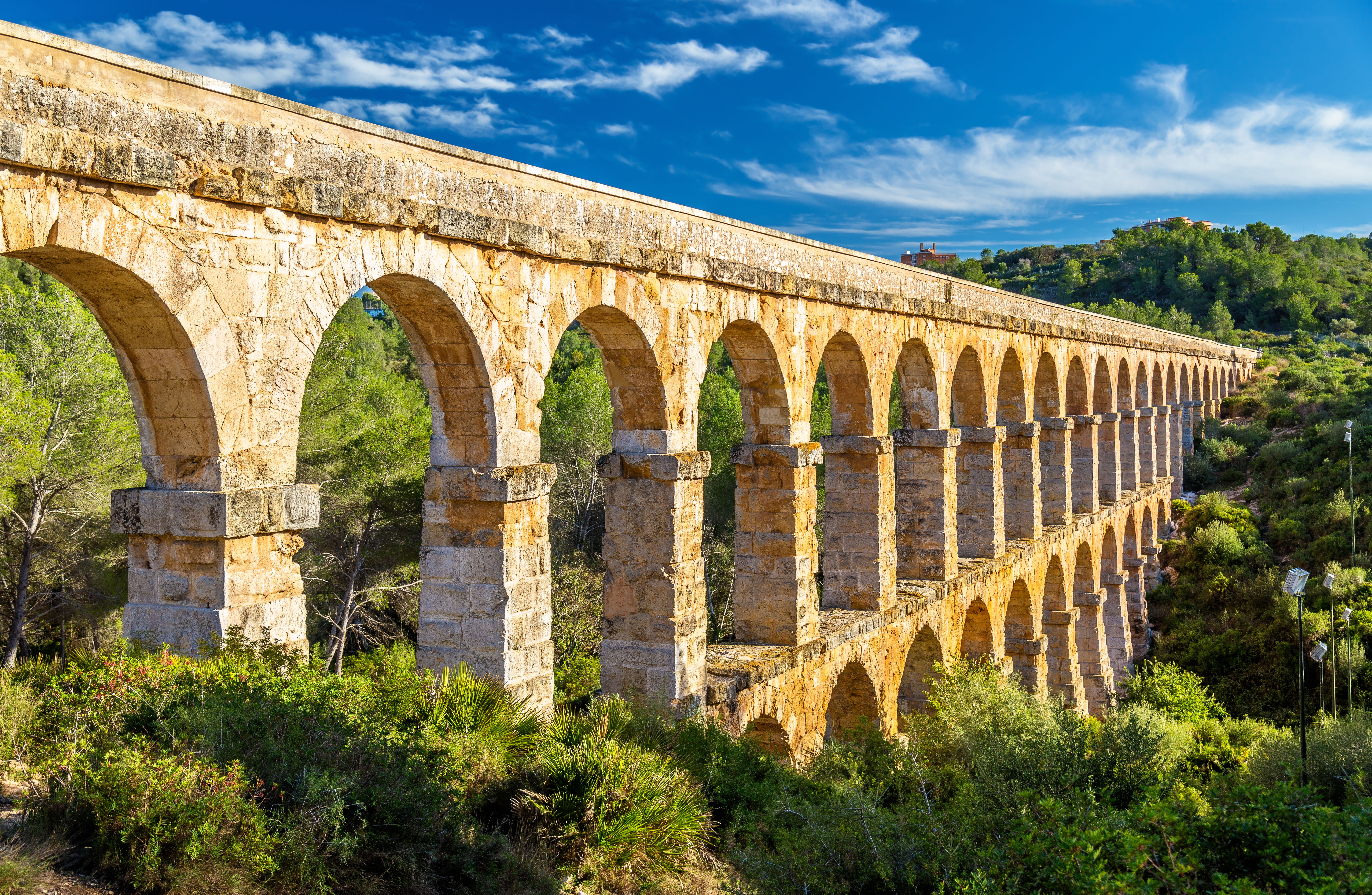
The Persians, who lived in present-day Iran, were one of the first civilizations to build tunnels that provided a reliable supply of water to human settlements in dry areas. In the early first millennium BCE, they introduced the qanat method of tunnel construction, which consisted of placing posts over a hill in a straight line, to ensure that the tunnel kept to its route, and then digging vertical shafts down into the ground at regular intervals. Underground, workers removed the earth from between the ends of the shafts, creating a tunnel. The excavated soil was taken up to the surface using the shafts, which also provided ventilation during the work. Once the tunnel was completed, it allowed water to flow from the top of a hillside down towards a canal, which supplied water for human use. Remarkably, some qanats built by the Persians 2,700 years ago are still in use today. They later passed on their knowledge to the Romans, who also used the qanat method to construct water-supply tunnels for agriculture. Roman qanat tunnels were constructed with vertical shafts dug at intervals of between 30 and 60 meters. The shafts were equipped with handholds and footholds to help those climbing in and out of them and were covered with a wooden or stone lid. To ensure that the shafts were vertical, Romans hung a plumb line from a rod placed across the top of each shaft and made sure that the weight at the end of it hung in the center of the shaft. Plumb lines were also used to measure the depth of the shaft and to determine the slope of the tunnel. The 5.6-kilometer-long Claudius tunnel, built in 41 CE to drain the Fucine Lake in central Italy, had shafts that were up to 122 meters deep, took 11 years to build and involved approximately 30,000 workers. By the 6th century BCE, a second method of tunnel construction appeared called the counter-excavation method, in which the tunnel was constructed from both ends. It was used to cut through high mountains when the qanat method was not a practical alternative. This method required greater planning and advanced knowledge of surveying, mathematics and geometry as both ends of a tunnel had to meet correctly at the center of the mountain. Adjustments to the direction of the tunnel also had to be made whenever builders encountered geological problems or when it deviated from its set path. They constantly checked the tunnel’s advancing direction, for example, by looking back at the light that penetrated through the tunnel mouth, and made corrections whenever necessary. Large deviations could happen, and they could result in one end of the tunnel not being usable. An inscription written on the side of a 428-meter tunnel, built by the Romans as part of the Saldae aqueduct system in modern-day Algeria, describes how the two teams of builders missed each other in the mountain and how the later construction of a lateral link between both corridors corrected the initial error. The Romans dug tunnels for their roads using the counter-excavation method, whenever they encountered obstacles such as hills or mountains that were too high for roads to pass over. An example is the 37-meter-long, 6-meter-high, Furlo Pass Tunnel built in Italy in 69-79 CE. Remarkably, a modern road still uses this tunnel today. Tunnels were also built for mineral extraction. Miners would locate a mineral vein and then pursue it with shafts and tunnels underground. Traces of such tunnels used to mine gold can still be found at the Dolaucothi mines in Wales. When the sole purpose of a tunnel was mineral extraction, construction required less planning, as the tunnel route was determined by the mineral vein. Roman tunnel projects were carefully planned and carried out. The length of time it took to construct a tunnel depended on the method being used and the type of rock being excavated. The qanat construction method was usually faster than the counter-excavation method as it was more straightforward. This was because the mountain could be excavated not only from the tunnel mouths but also from shafts. The type of rock could also influence construction times. When the rock was hard, the Romans employed a technique called fire quenching which consisted of heating the rock with fire, and then suddenly cooling it with cold water so that it would crack. Progress through hard rock could be very slow, and it was not uncommon for tunnels to take years, if not decades, to be built. Construction marks left on a Roman tunnel in Bologna show that the rate of advance through solid rock was 30 centimeters per day. In contrast, the rate of advance of the Claudius tunnel can be calculated at 1.4 meters per day. Most tunnels had inscriptions showing the names of patrons who ordered construction and sometimes the name of the architect. For example, the 1.4-kilometer Cevlik tunnel in Turkey, built to divert the floodwater threatening the harbor of the ancient city of Seleuceia Pieria, had inscriptions on the entrance, still visible today, that also indicate that the tunnel was started in 69 CE and was completed in 81 CE.

Japanese firms have achieved the highest levels of manufacturing efficiency in the world automobile industry. Some observers of Japan have assumed that Japanese firms use the same manufacturing equipment and techniques as United States firms but have benefited from the unique characteristics of Japanese employees and the Japanese culture. However, if this were true, then one would expect Japanese auto plants in the United States to perform no better than factories run by United States companies. This is not the case, Japanese-run automobile plants located in the United States and staffed by local workers have demonstrated higher levels of productivity when compared with factories owned by United States companies. Other observers link high Japanese productivity to higher levels of capital investment per worker. But a historical perspective leads to a different conclusion. When the two top Japanese automobile makers matched and then doubled United States productivity levels in the mid-sixties, capital investment per employee was comparable to that of United States firms. Furthermore, by the late seventies, the amount of fixed assets required to produce one vehicle was roughly equivalent in Japan and in the United States. Since capital investment was not higher in Japan, it had to be other factors that led to higher productivity. A more fruitful explanation may lie with Japanese production techniques. Japanese automobile producers did not simply implement conventional processes more effectively: they made critical changes in United States procedures. For instance, the mass-production philosophy of United States automakers encouraged the production of huge lots of cars in order to utilize fully expensive, component-specific equipment and to occupy fully workers who have been trained to execute one operation efficiently. Japanese automakers chose to make small-lot production feasible by introducing several departures from United States practices, including the use of flexible equipment that could be altered easily to do several different production tasks and the training of workers in multiple jobs. Automakers could schedule the production of different components or models on single machines, thereby eliminating the need to store the buffer stocks of extra components that result when specialized equipment and workers are kept constantly active.
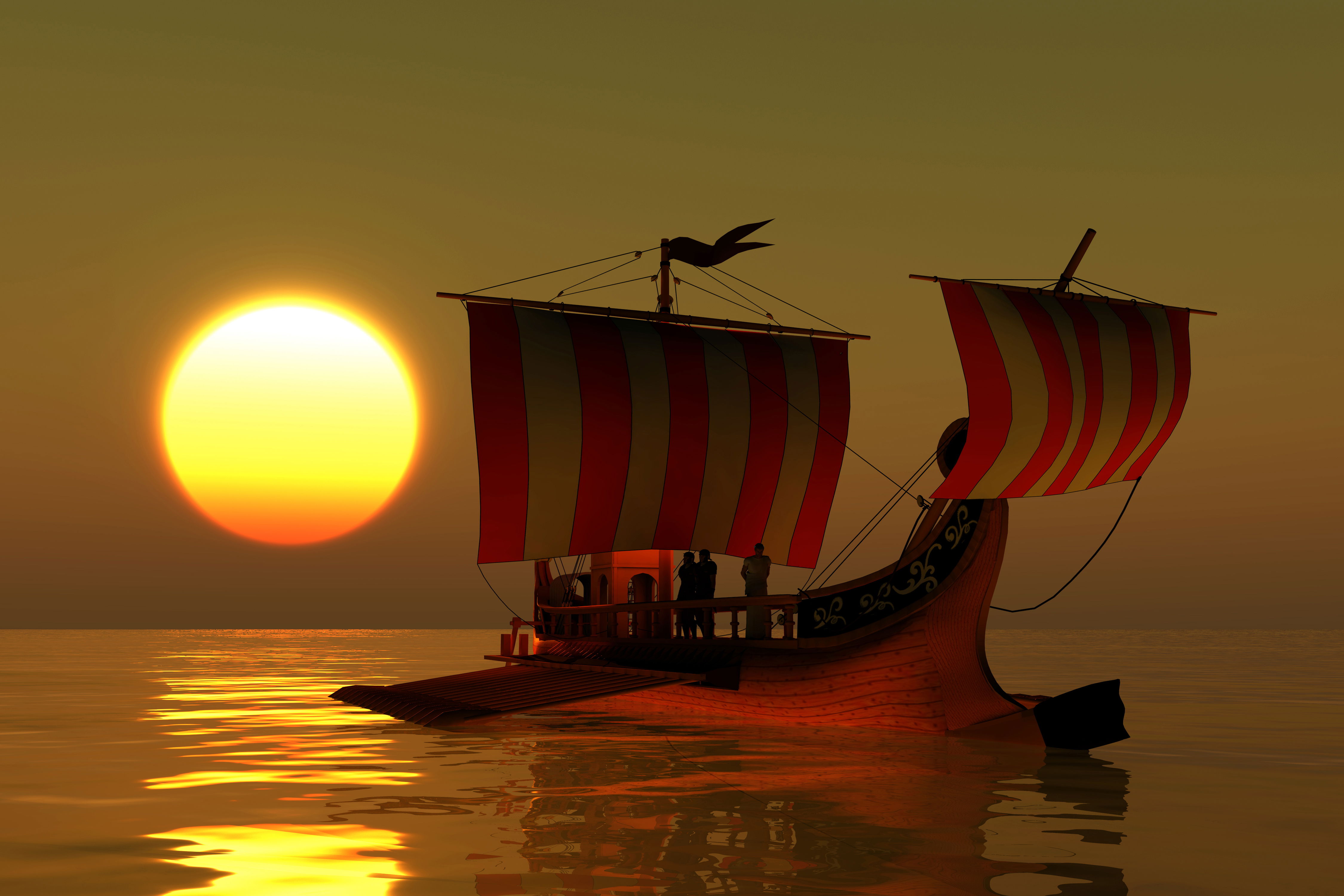
Shipbuilding today is based on science and ships are built using computers and sophisticated tools. Shipbuilding in ancient Rome, however, was more of an art relying on estimation, inherited techniques and personal experience. The Romans were not traditionally sailors but mostly land- based people, who learned to build ships from the people that they conquered, namely the Greeks and the Egyptians. There are a few surviving written documents that give descriptions and representations of ancient Roman ships, including the sails and rigging. Excavated vessels also provide some clues about ancient shipbuilding techniques. Studies of these have taught us that ancient Roman shipbuilders built the outer hull first, then proceeded with the frame and the rest of the ship. Planks used to build the outer hull were initially sewn together. Starting from the 6th century BCE, they were fixed using a method called mortise and tenon, whereby one plank locked into another without the need for stitching. Then in the first centuries of the current era, Mediterranean shipbuilders shifted to another shipbuilding method, still in use today, which consisted of building the frame first and then proceeding with the hull and the other components of the ship. This method was more systematic and dramatically shortened ship construction times. The ancient Romans built large merchant ships and warships whose size and technology were unequalled until the 16th century CE. Warships were built to be lightweight and very speedy. They had to be able to sail near the coast, which is why they had no ballast or excess load and were built with a long, narrow hull. They did not sink when damaged and often would lie crippled on the sea’s surface following naval battles. They had a bronze battering ram, which was used to pierce the timber hulls or break the oars of enemy vessels. Warships used both wind (sails) and human power (oarsmen) and were therefore very fast. Eventually, Rome’s navy became the largest and most powerful in the Mediterranean, and the Romans had control over what they therefore called Mare Nostrum meaning ‘our sea’. There were many kinds of warship. The ‘trireme’ was the dominant warship from the 7th to 4th century BCE. It had rowers in the top, middle and lower levels, and approximately 50 rowers in each bank. The rowers at the bottom had the most uncomfortable position as they were under the other rowers and were exposed to the water entering through the oar-holes. It is worth noting that contrary to popular perception, rowers were not slaves but mostly Roman citizens enrolled in the military. The trireme was superseded by larger ships with even more rowers. Merchant ships were built to transport lots of cargo over long distances and at a reasonable cost. They had a wider hull, double planking and a solid interior for added stability. Unlike warships, their V-shaped hull was deep underwater, meaning that they could not sail too close to the coast. They usually had two huge side rudders located off the stern and controlled by a small tiller bar connected to a system of cables. They had from one to three masts with large square sails and a small triangular sail at the bow. Just like warships, merchant ships used oarsmen, but coordinating the hundreds of rowers in both types of ship was not an easy task. In order to assist them, music would be played on an instrument, and oars would then keep time with this. The cargo on merchant ships included raw materials (e.g. iron bars, copper, marble and granite), and agricultural products (e.g. grain from Egypt’s Nile valley). During the Empire, Rome was a huge city by ancient standards of about one million inhabitants. Goods from all over the world would come to the city through the port of Pozzuoli situated west of the bay of Naples in Italy and through the gigantic port of Ostia situated at the mouth of the Tiber River. Large merchant ships would approach the destination port and, just like today, be intercepted by a number of towboats that would drag them to the quay. The time of travel along the many sailing routes could vary widely. Navigation in ancient Rome did not rely on sophisticated instruments such as compasses but on experience, local knowledge and observation of natural phenomena. In conditions of good visibility, seamen in the Mediterranean often had the mainland or islands in sight, which greatly facilitated navigation. They sailed by noting their position relative to a succession of recognisable landmarks. When weather conditions were not good or where land was no longer visible, Roman mariners estimated directions from the pole star or, with less accuracy, from the Sun at noon. They also estimated directions relative to the wind and swell. Overall, shipping in ancient Roman times resembled shipping today with large vessels regularly crossing the seas and bringing supplies from their Empire.
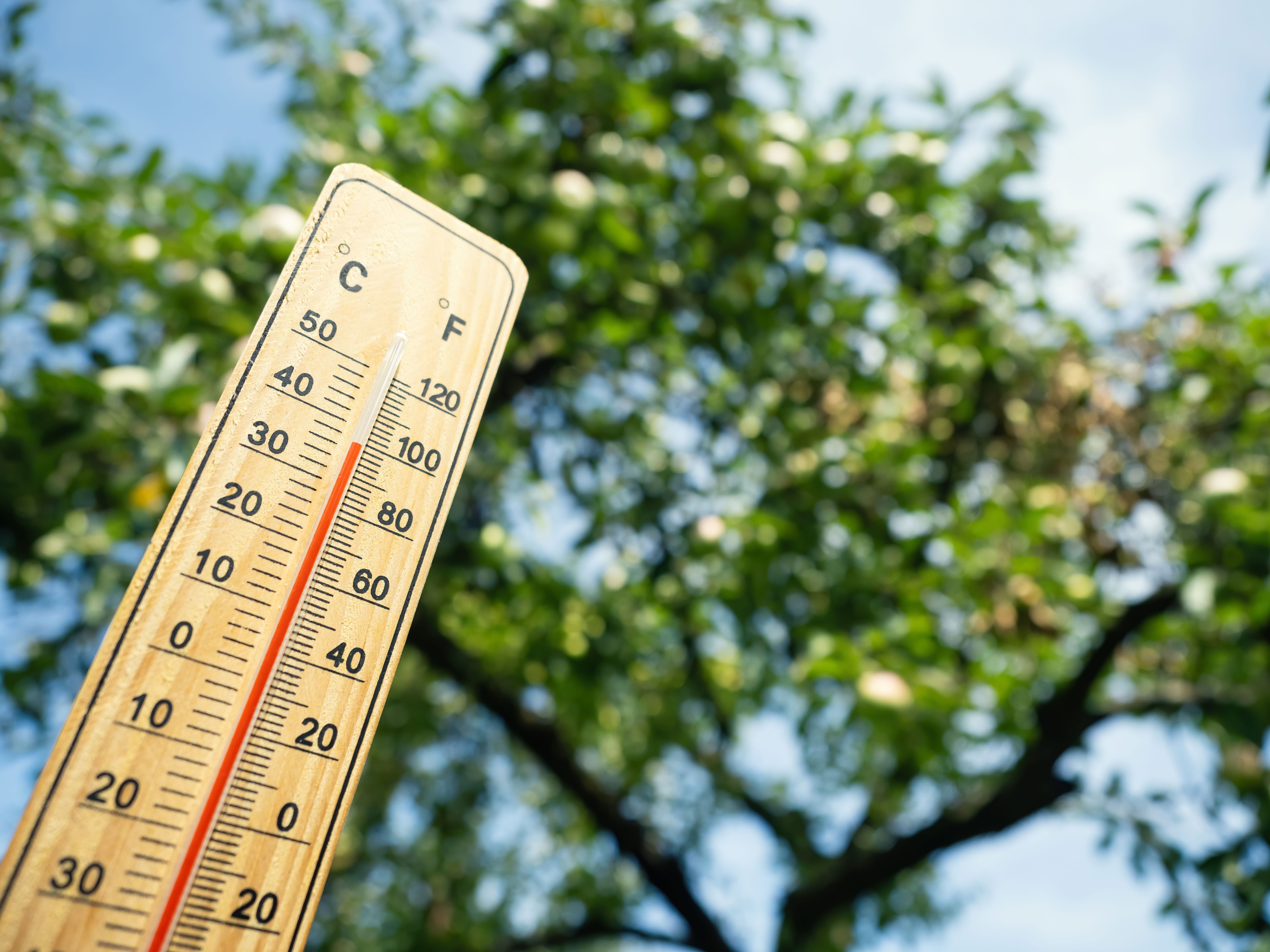
A An international team of scientists led by the University of Cambridge has discovered that the ‘thermometer’ molecule in plants enables them to develop according to seasonal temperature changes. Researchers have revealed that molecules called phytochromes – used by plants to detect light during the day – actually change their function in darkness to become cellular temperature gauges that measure the heat of the night. The new findings, published in the journal Science, show that phytochromes control genetic switches in response to temperature as well as light to dictate plant development.
B At night, these molecules change states, and the pace at which they change is ‘directly proportional to temperature’, say scientists, who compare phytochromes to mercury in a thermometer. The warmer it is, the faster the molecular change – stimulating plant growth.
C Farmers and gardeners have known for hundreds of years how responsive plants are to temperature: warm winters cause many trees and flowers to bud early, something humans have long used to predict weather and harvest times for the coming year. The latest research pinpoints for the first time a molecular mechanism in plants that reacts to temperature – often triggering the buds of spring we long to see at the end of winter.
D With weather and temperatures set to become ever more unpredictable due to climate change, researchers say the discovery that this light-sensing molecule also functions as the internal thermometer in plant cells could help us breed tougher crops. ‘It is estimated that agricultural yields will need to double by 2050, but climate change is a major threat to achieving this. Key crops such as wheat and rice are sensitive to high temperatures. Thermal stress reduces crop yields by around 10% for every one degree increase in temperature,’ says lead researcher Dr Philip Wigge from Cambridge’s Sainsbury Laboratory. ‘Discovering the molecules that allow plants to sense temperature has the potential to accelerate the breeding of crops resilient to thermal stress and climate change.’
E In their active state, phytochrome molecules bind themselves to DNA to restrict plant growth. During the day, sunlight activates the molecules, slowing down growth. If a plant finds itself in shade, phytochromes are quickly inactivated – enabling it to grow faster to find sunlight again. This is how plants compete to escape each other’s shade. ‘Light-driven changes to phytochrome activity occur very fast, in less than a second,’ says Wigge. At night, however, it’s a different story. Instead of a rapid deactivation following sundown, the molecules gradually change from their active to inactive state. This is called ‘dark reversion’. ‘Just as mercury rises in a thermometer, the rate at which phytochromes revert to their inactive state during the night is a direct measure of temperature,’ says Wigge.
F ‘The lower the temperature, the slower the rate at which phytochromes revert to inactivity, so the molecules spend more time in their active, growth-suppressing state. This is why plants are slower to grow in winter. Warm temperatures accelerate dark reversion, so that phytochromes rapidly reach an inactive state and detach themselves from the plant’s DNA – allowing genes to be expressed and plant growth to resume.’ Wigge believes phytochrome thermo-sensing evolved at a later stage, and co-opted the biological network already used for light-based growth during the downtime of night.
G Some plants mainly use day length as an indicator of the season. Other species, such as daffodils, have considerable temperature sensitivity, and can flower months in advance during a warm winter. In fact, the discovery of the dual role of phytochromes provides the science behind a well-known rhyme long used to predict the coming season: oak before ash we’ll have a splash, ash before oak we’re in for a soak. Wigge explains: ‘Oak trees rely much more on temperature, likely using phytochromes as thermometers to dictate development, whereas ash trees rely on measuring day length to determine their seasonal timing. A warmer spring, and consequently a higher likeliness of a hot summer, will result in oak leafing before ash. A cold spring will see the opposite. As the British know only too well, a colder summer is likely to be a rain-soaked one.’
H The new findings are the culmination of twelve years of research involving scientists from Germany, Argentina and the US, as well as the Cambridge team. The work was done in a model system, using a mustard plant called Arabidopsis, but Wigge says the phytochrome genes necessary for temperature sensing are found in crop plants as well. ‘Recent advances in plant genetics now mean that scientists are able to rapidly identify the genes controlling these processes in crop plants, and even alter their activity using precise molecular “scalpels”,’ adds Wigge. ‘Cambridge is uniquely well-positioned to do this kind of research as we have outstanding collaborators nearby who work on more applied aspects of plant biology, and can help us transfer this new knowledge into the field.’
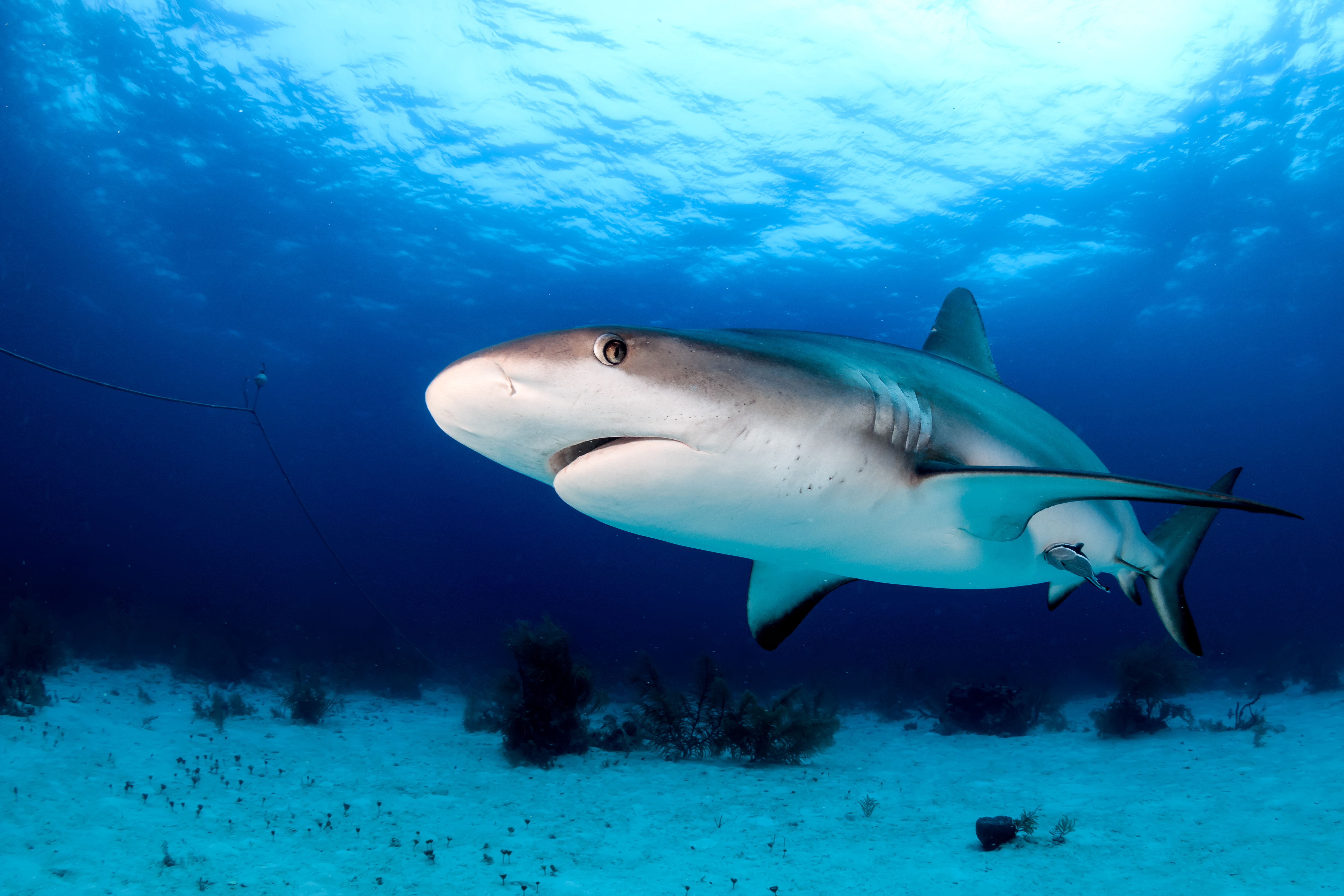
The well-developed sensory systems of sharks capacitate them with unmatched advantages—in comparison to almost every other animal—when hunting or feeding.
The sense of smell comprises almost one-third of a shark’s brain. A shark’s sense of smell is so powerful that it can detect perfumes and odors in the water hundreds of meters from their source. Sharks can detect as little as one part per million of substances in the water, such as blood, body fluids, and chemical substances produced by animals under stress. Some sharks can detect as few as ten drops of liquid tuna in the volume of water it takes to fill an average swimming pool.
Sharks’ eyes detect and capture virtually small movements and they can sense in gloomy conditions, making them effective hunters in virtually dark depths. Like cats and other nocturnal hunters, sharks have a reflective layer in the back of their eyes, called the tapetum lucidum, which magnifies low levels of light. In clear water, sharks see their prey when it is about 20 to 30 meters away.
Sharks’ eyes also contain specific cells that detect color, and behavioral studies suggest that sharks can see colors as well as black, white, and shades of gray. These studies also revealed that luminous and glimmering objects and bright colors, such as yellow and orange, may attract sharks.
Sharks employ an extra sensory system—which scientists call the lateral line—to detect vibrations in the water which fish, boats, surfers or even swimmers often create. A narrow strip of sensory cells running along the sides of the body and into the shark’s head comprises the lateral line. This sensory system is especially sensitive to sounds in the low-frequency ranges, such as those which struggling wounded fish or other animals emit.
Additionally, the functioning of neurons and muscles in living animals create electrical currents which sharks sense in no time. The shark’s electrosensors—the clusters of ampullae of Lorenzini—exist over the shark’s head of all sharks. This reception system is effective only over distances of less than 1 meter. It may aid sharks in the final stages of feeding or attack. Scientists also concede that this system may somehow capacitate sharks to detect the feeble electromagnetic fields of the Earth, ushering them in migration.

Although many companies offer tuition reimbursement, most companies reimburse employees only for classes that are relevant to their positions. This is a very limiting policy. A company that reimburses employees for all college credit courses— whether job related or not— offers a service not only to the employees, but to the entire company.
One good reason for giving employees unconditional tuition reimbursement is that it shows the company’s dedication to its employees. In today’s economy, where job security is a thing of the past and employees feel more and more expendable, it is important for a company to demonstrate to its employees that it cares. The best way to do this is with concrete investments in them.
In turn, this dedication to the betterment of company employees will create greater employee loyalty. A company that puts out funds to pay for the education of its employees will get its money back by having employees stay with the company longer. It will reduce employee turnover, because even employees who don’t take advantage of the tuition reimbursement program will be more loyal to their company, just knowing that their company cares enough to pay for their education.
Most importantly, the company that has an unrestricted tuition reimbursement program will have higher quality employees. Although these companies do indeed run the risk of losing money on employees who go on to another job in a different company as soon as they get their degree, more often than not, the employee will stay with the company. And even if employees do leave after graduation, it generally takes several years to complete any degree program. Thus, even if the employee leaves upon graduating, throughout those years, the employer will have a more sophisticated, more intelligent, and therefore more valuable and productive employee. And, if the employee stays, that education will doubly benefit the company: Not only is the employee more educated, but now that employee can be promoted so the company doesn’t have to fill a high - level vacancy from the outside. Open positions can be filled by people who already know the company well.
Though unconditional tuition reimbursement requires a significant investment on the employer’s part, it is perhaps one of the wisest investments a company can make.
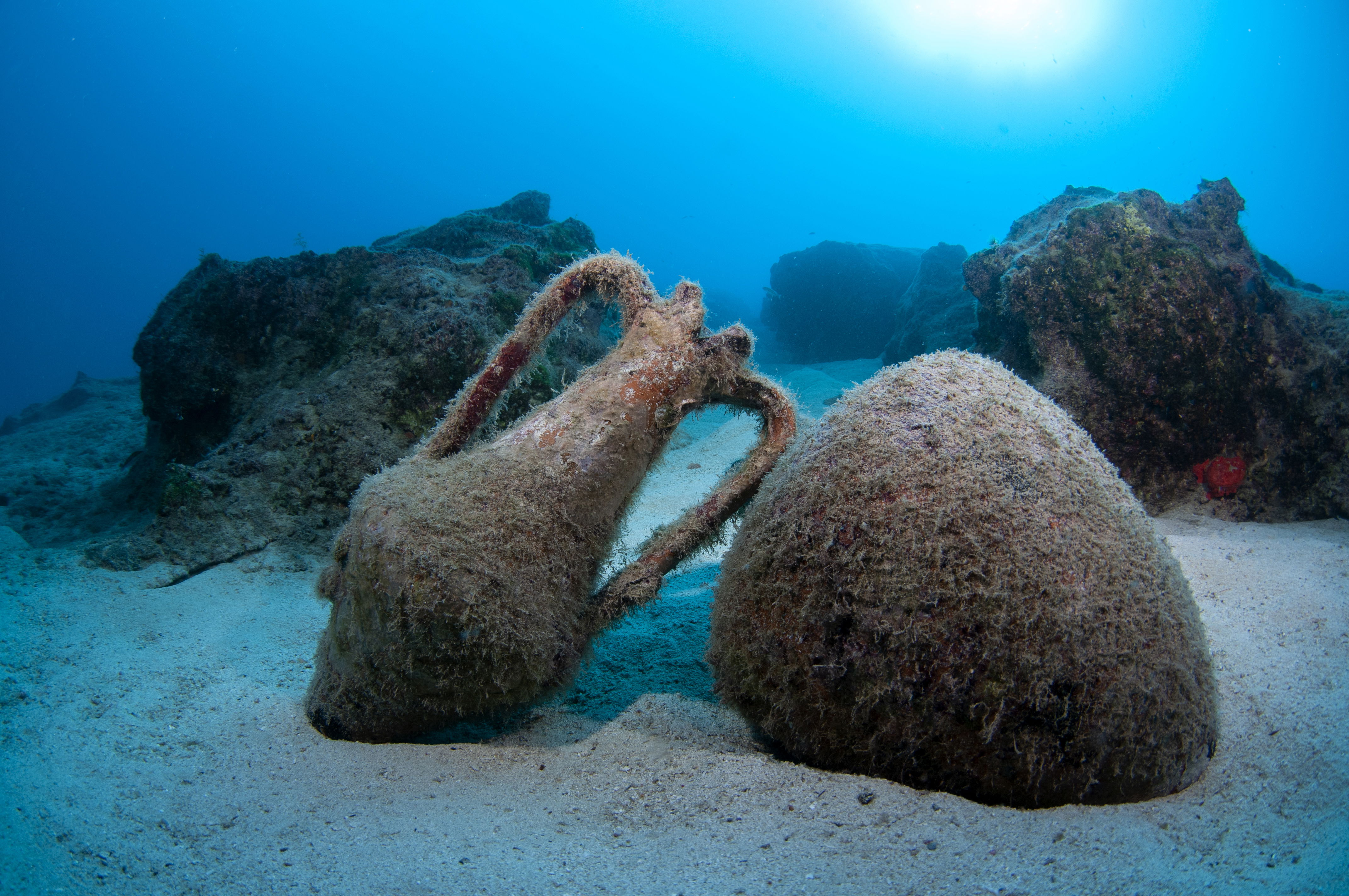
The availability of archeological evidence for study is dependent on the natural conditions in which the archeological remains are found; certain types of natural conditions favor preservation of organic substances and therefore lend themselves to sheltering well-preserved organic remains, while other types of natural conditions lead to the degradation or destruction of organic remains that may have existed. An important distinction in land archeology can be made between dryland and wetland archeological sites. The vast majority of sites are dry sites, which means that the moisture content of the material enveloping the archeological evidence is low and preservation of the organic material as a result is quite poor. Wetland archeological sites are sites such as those found in lakes, swamps, marshes, and bogs; in these wetland archeological sites, organic materials are effectively sealed in an environment that is airless and wet and that therefore tends to foster preservation. It has been estimated that on a wet archeological site often 90 percent of the finds are organic. This is the case, however, only when the site has been more or less permanently waterlogged up to the time of excavation; if a wet site has dried out periodically, perhaps seasonally, decomposition of the organic material has most likely taken place. Organic material such as textiles, leather, basketry, wood, and plant remains of all kinds tends to be well preserved in permanently waterlogged sites, while little or none of this type of organic material would survive in dryland archeological sites or in wetland sites that have from time to time dried out. For this reason, archeologists have been focusing more on wet sites, which are proving to be rich sources of evidence about the lifestyles and activities of past human cultures. A serious problem with archeological finds in waterlogged environments is that the organic finds, and wood in particular, deteriorate rapidly when they are removed from the wet environment and begin to dry out. It is therefore important that organic finds be kept wet until they can be treated in a laboratory; the need for extraordinary measures to preserve organic finds taken from wetland environments in part explains the huge cost of wetland archeology, which has been estimated to be quadruple the cost of dryland archeology. One wetland site that has produced extraordinary finds is the Ozette site, on the northwest coast of the United States in the state of Washington. Around 1750, a huge mudslide that resulted from the seasonal swelling of an underground stream completely covered sections of a whaling village located there. Memories of the village were kept alive by descendants of the surviving inhabitants of the village in their traditional stories, and an archeological excavation of the site was organized. The mud was removed from the site, and a number of well-preserved cedarwood houses were uncovered, complete with carved panels painted with animal designs, hearths, and benches for sleeping. More than 50,000 artifacts in excellent condition were found, including woven material such as baskets and mats, equipment for weaving such as looms and spindles, hunting equipment such as bows and harpoons, fishing equipment such as hooks and rakes, equipment used for water transportation such as canoe paddles and bailers, containers such as wooden boxes and bowls, and decorative items such as a huge block of cedar carved in the shape of the dorsal fin of a whale and miniature carved figurines.

The fundamental objectives of sociology are the same as those of science generally discovery and explanation. To discover the essential data of social behavior and the connections among the data is the first objective of sociology. To explain the data and the connections is the second and larger objective. Science makes its advances in terms of both of these objectives. Sometimes it is the discovery of a new element or set of elements that marks a major breakthrough in the history of a scientific discipline. Closely related to such discovery is the discovery of relationships of data that had never been noted before. All of this is, as we know, of immense importance in science. But the drama of discovery, in this sense, can sometimes lead us to overlook the greater importance of explanation of what is revealed by the data. Sometimes decades, even centuries, pass before known connections and relationships are actually explained. Discovery and explanation are the two great interpenetrating, interacting realms of science. The order of reality that interests the scientists is the empirical order, that is, the order of data and phenomena revealed to us through observation or experience. To be precise or explicit about what is, and is not, revealed by observation is not always easy, to be sure. And often it is necessary for our natural powers of observation to be supplemented by the most intricate of mechanical aids for a given object to become "empirical" in the sense just used. That the electron is not as immediately visible as is the mountain range does not mean, obviously, that it is any less empirical. That social behavior does not lend itself to as quick and accurate description as, say, chemical behavior of gases and compounds does not mean that social roles, statuses, and attitudes are any less empirical than molecules and tissues. What is empirical and observable today may have been nonexistent in scientific consciousness a decade ago. Moreover, the empirical is often data inferred from direct observation. All of this is clear enough, and we should make no pretense that there are not often shadow areas between the empirical and the non empirical. Nevertheless, the first point to make about any science, physical or social, is that its world of data is the empirical world. A very large amount of scientific energy goes merely into the work of expanding the frontiers, through discovery, of the known, observable, empirical world.
From observation or discovery we move to explanation. The explanation sought by the scientist is, of course, not at all like the explanation sought by the theologian or metaphysician. The scientist is not interested mnot, that is, in his role of scientist min ultimate, transcendental, or divine causes of what he sets himself to explain. He is interested in explanations that are as empirical as the data themselves. If it is the high incidence of crime in a certain part of a large city that requires explanation, the scientist is obliged to offer his explanation in terms of factors which are empirically real as the phenomenon of crime itself. He does not explain the problem, for example, in terms of references to the will of God, demons, or original sin. A satisfactory explanation is not only one that is empirical, however, but one that can be stated in the terms of a causal proposition. Description is an indispensable point of beginning, but description is not explanation. It is well to stress this point, for there are all too many scientists, or would-be scientists, who are primarily concerned with data gathering, data counting, and data describing, and who seem to forget that such operations, however useful, are but the first step. Until we have accounted for the problem at hand, explain edit causally by referring the data to some principle or generalization already established, or to some new principle or generalization, we have not explained anything.

A Well above the treeline in Norway’s highest mountains, ancient fields of ice are shrinking as Earth’s climate warms. As the ice has vanished, it has been giving up the treasures it has preserved in cold storage for the last 6,000 years – items such as ancient arrows and skis from Viking Age traders. And those artefacts have provided archaeologists with some surprising insights into how ancient Norwegians made their livings.
B Organic materials like textiles and hides are relatively rare finds at archaeological sites. This is because unless they’re protected from the microorganisms that cause decay, they tend not to last long. Extreme cold is one reliable way to keep artefacts relatively fresh for a few thousand years, but once thawed out, these materials experience degradation relatively swiftly. With climate change shrinking ice cover around the world, glacial archaeologists need to race the clock to find newly revealed artefacts, preserve them, and study them. If something fragile dries and is windblown it might very soon be lost to science, or an arrow might be exposed and then covered again by the next snow and remain well-preserved. The unpredictability means that glacial archaeologists have to be systematic in their approach to fieldwork.
C Over a nine-year period, a team of archaeologists, which included Lars Pilo of Oppland County Council, Norway, and James Barrett of the McDonald Institute for Archaeological Research, surveyed patches of ice in Oppland, an area of south-central Norway that is home to some of the country’s highest mountains. Reindeer once congregated on these icy patches in the later summer months to escape biting insects, and from the late Stone Age**, hunters followed. In addition, trade routes threaded through the mountain passes of Oppland, linking settlements in Norway to the rest of Europe. The slow but steady movement of glaciers tends to destroy anything at their bases, so the team focused on stationary patches of ice, mostly above 1,400 metres. That ice is found amid fields of frost-weathered boulders, fallen rocks, and exposed bedrock that for nine months of the year is buried beneath snow. ‘Fieldwork is hard work – hiking with all our equipment, often camping on permafrost – but very rewarding. You’re rescuing the archaeology, bringing the melting ice to wider attention, discovering a unique environmental history and really connecting with the natural environment,’ says Barrett.
D At the edges of the contracting ice patches, archaeologists found more than 2,000 artefacts, which formed a material record that ran from 4,000 BCE to the beginnings of the Renaissance in the 14th century. Many of the artefacts are associated with hunting. Hunters would have easily misplaced arrows and they often discarded broken bows rather than take them all the way home. Other items could have been used by hunters traversing the high mountain passes of Oppland: all-purpose items like tools, skis, and horse tack.
E Barrett’s team radiocarbon-dated 153 of the artefacts and compared those dates to the timing of major environmental changes in the region – such as periods of cooling or warming – and major social and economic shifts – such as the growth of farming settlements and the spread of international trade networks leading up to the Viking Age. They found that some periods had produced lots of artefacts, which indicates that people had been pretty active in the mountains during those times. But there were few or no signs of activity during other periods.
F What was surprising, according to Barrett, was the timing of these periods. Oppland’s mountains present daunting terrain and in periods of extreme cold, glaciers could block the higher mountain passes and make travel in the upper reaches of the mountains extremely difficult. Archaeologists assumed people would stick to lower elevations during a time like the Late Antique Little Ice Age, a short period of deeper-than-usual cold from about 536-600 CE. But it turned out that hunters kept regularly venturing into the mountains even when the climate turned cold, based on the amount of stuff they had apparently dropped there. ‘Remarkably, though, the finds from the ice may have continued through this period, perhaps suggesting that the importance of mountain hunting increased to supplement failing agricultural harvests in times of low temperatures,’ says Barrett. A colder turn in the Scandinavian climate would likely have meant widespread crop failures, so more people would have depended on hunting to make up for those losses.
G Many of the artefacts Barrett’s team recovered date from the beginning of the Viking Age, the 700s through to the 900s CE. Trade networks connecting Scandinavia with Europe and the Middle East were expanding around this time. Although we usually think of ships when we think of Scandinavian expansion, these recent discoveries show that plenty of goods travelled on overland routes, like the mountain passes of Oppland. And growing Norwegian towns, along with export markets, would have created a booming demand for hides to fight off the cold, as well as antlers to make useful things like combs. Business must have been good for hunters.
H Norway’s mountains are probably still hiding a lot of history – and prehistory – in remote ice patches. When Barrett’s team looked at the dates for their sample of 153 artefacts, they noticed a gap with almost no artefacts from about 3,800 to 2,200 BCE. In fact, archaeological finds from that period are rare all over Norway. The researchers say that could be because many of those artefacts have already disintegrated or are still frozen in the ice. That means archaeologists could be extracting some of those artefacts from retreating ice in years to come.

For 150 years scientists have tried to determine the solar constant, the amount of solar energy that reaches the Earth. Yet, even in the most cloud-free regions of the planet, the solar constant cannot be measured precisely. Gas molecules and dust particles in the atmosphere absorb and scatter sunlight and prevent some wavelengths of the light from ever reaching the ground. With the advent of satellites, however, scientists have finally been able to measure the Sun's output without being impeded by the Earth's atmosphere. Solar Max, a satellite from the National Aeronautics and Space Administration (NASA), has been measuring the Sun's output since February 1980. Although a malfunction in the satellite's control system limited its observation for a few years, the satellite was repaired in orbit by astronauts from the space shuttle in 1984. Max's observations indicate that the solar constant is not really constant after all. The satellite's instruments have detected frequent, small variations in the Sun's energy output, generally amounting to no more than 0.05 percent of the Sun's mean energy output and lasting from a few days to a few weeks. Scientists believe these fluctuations coincide with the appearance and disappearance of large groups of sun spots on the Sun's disk. Sunspots are relatively dark regions on the Sun's surface that have strong magnetic fields and a temperature about 2,000 degrees Fahrenheit cooler than the rest of the Sun's surface. Particularly large fluctuations in the solar constant have coincided with sightings of large sunspot groups. In 1980, for example, Solar Max's instruments registered a 0.3 percent drop in the solar energy reaching the Earth. At that time a sun spot group covered about 0.6 percent of the solar disk, an area 20 times larger than the Earth's surface. Long-term variations in the solar constant are more difficult to determine. Although Solar Max's data have indicated a slow and steady decline in the Sun's output, some scientists have thought that the satellite's aging detectors might have become less sensitive over the years, thus falsely indicating a drop in the solar constant. This possibility was dismissed, however, by comparing Solar Max's observations with data from a similar instrument operating on NASA's Nimbus 7 weather satellite since 1978.

The immune system is equal in complexity to the combined intricacies of the brain and nervous system. The success of the immune system in defending the body relies on a dynamic regulatory communications network consisting of millions and millions of cells. Organized into sets and subsets, these cells pass information back and forth like clouds of bees swarming around a hive. The result is a sensitive system of checks and balances that produces an immune response that is prompt, appropriate, effective, and self-limiting. At the heart of the immune system is the ability to distinguish between self and non self. When immune defenders encounter cells or organisms carrying foreign or non self molecules, the immune troops move quickly to eliminate the intruders. Virtually every body cell carries distinctive molecules that identify it as self. The body’s immune defenses do not normally attack tissues that carry a self-marker. Rather, immune cells and other body cells coexist peaceably in a state known as self-tolerance. When a normally functioning immune system attacks a non self molecule, the system has the ability to “remember” the specifics of the foreign body. Upon subsequent encounters with the same species of molecules, the immune system reacts accordingly. With the possible exception of antibodies passed during lactation, this so called immune system memory is not inherited. Despite the occurrence of a virus in your family, your immune system must “learn” from experience with the many millions of distinctive non elf molecules in the sea of microbes in which we live. Learning entails producing the appropriate molecules and cells to match up with and counteract each non self invader. Any substance capable of triggering an immune response is called an antigen. Antigens are not to be confused with allergens, which are most often harmless substances (such as ragweed pollen or cat hair) that provoke the immune system to set off the inappropriate and harmful response known as allergy. An antigen can be a virus, a bacterium, a fungus, a parasite, or even a portion or product of one of these organisms. Tissues or cells from another individual (except an identical twin, whose cells carry identical self-markers) also act as antigens; because the immune system recognizes transplanted tissues as foreign, it rejects them. The body will even reject nourishing proteins unless they are first broken down by the digestive system into their primary, nonantigenic building blocks. An antigen announces its foreignness by means of intricate and characteristic shapes called epitopes, which protrude from its surface. Most antigens, even the simplest microbes, carry several different kinds of epitopes on their surface; some may even carry several hundred. Some epitopes will be more effective than others at stimulating an immune response. Only in abnormal situations does the immune system wrongly identify self as non self and execute a misdirected immune attack. The result can be a so-called autoimmune disease such as rheumatoid arthritis or systemic lupus erythematosis. The painful side effects of these diseases are caused by a person’s immune system actually attacking itself.
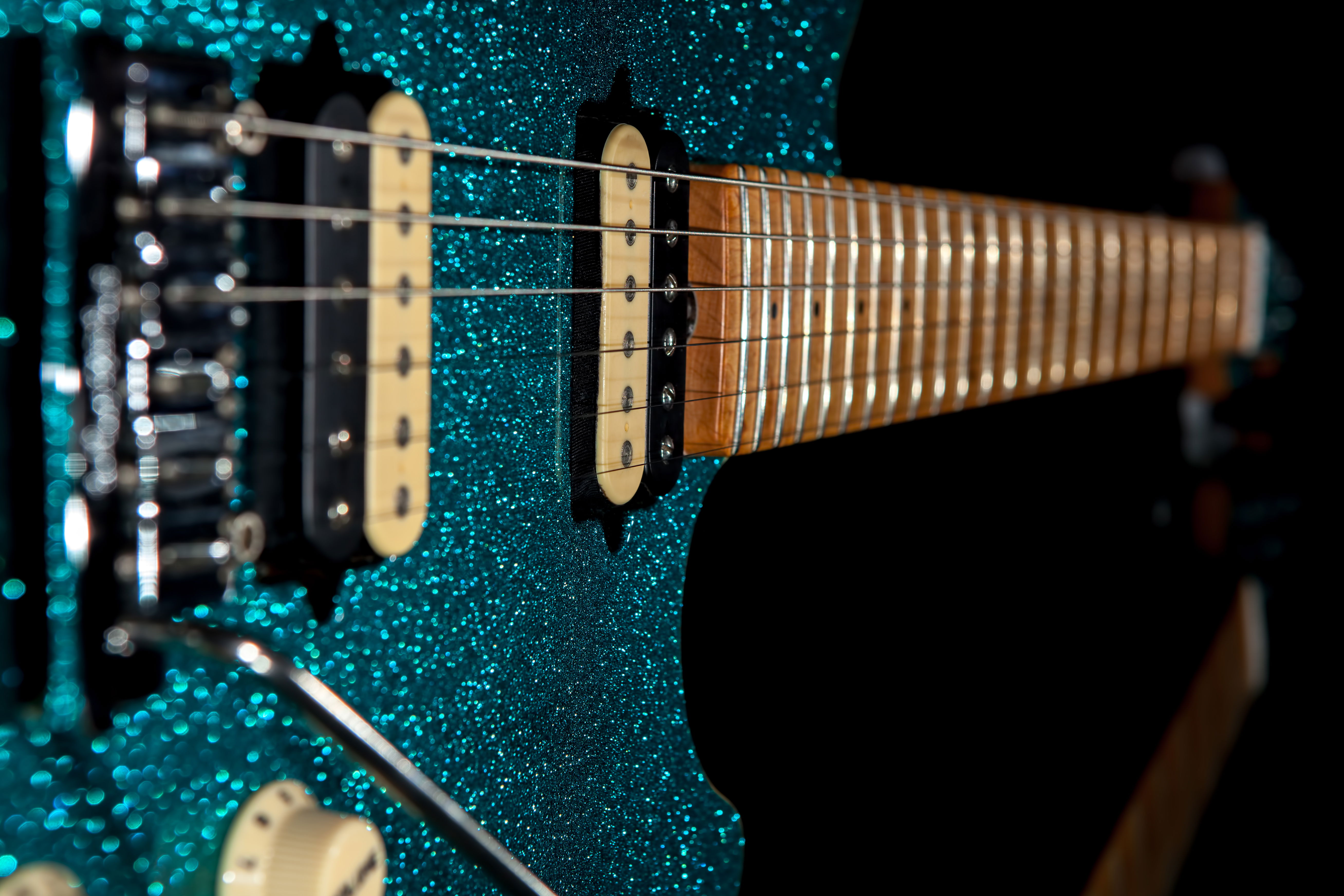
The late 1980s found the landscape of popular music in America dominated by a distinctive style of rock and roll known as glam rock or hair metal—so called because of the over-styled hair, makeup, and wardrobe worn by the genre’s ostentatious rockers. Bands like Poison, White snake, and Mötley Crüe popularized glam rock with their power ballads and flashy style, but the product had worn thin by the early 1990s. Just as superficial as the 80s,glam rockers were shallow, short on substance, and musically inferior. In 1991, a Seattle-based band called Nirvana shocked the corporate music industry with the release of its debut single, “Smells Like Teen Spirit,” which quickly became a huge hit all over the world. Nirvana’s distorted, guitar-laden sound and thought-provoking lyrics were the antithesis of glam rock, and the youth of America were quick to pledge their allegiance to the brand-new movement known as grunge. Grunge actually got its start in the Pacific Northwest during the mid-1980s. Nirvana had simply mainstreamed a sound and culture that got its start years before with bands like Mudhoney, Soundgarden, and Green River. Grunge rockers derived their fashion sense from the youth culture of the Pacific Northwest: a melding of punk rock style and outdoors clothing like flannels, heavy boots, worn out jeans, and corduroys. At the height of the movement’s popularity, when other Seattle bands like Pearl Jam and Alice in Chains were all the rage, the trappings of grunge were working their way to the height of American fashion. Like the music, the teenagers were fast to embrace the grunge fashion because it represented defiance against corporate America and shallow pop culture. The popularity of grunge music was ephemeral; by the mid- to late-1990s, its influence upon American culture had all but disappeared, and most of its recognizable bands were nowhere to be seen on the charts. The heavy sound and themes of grunge were replaced on the radio waves by boy bands like the Backstreet Boys, and the bubble gum pop of Britney Spears and Christina Aguilera. There are many reasons why the Seattle sound faded out of the mainstream as quickly as it rocketed to prominence, but the most glaring reason lies at the defiant, anti-establishment heart of the grunge movement itself. It is very hard to buck the trend when you are the one setting it, and many of the grunge bands were never comfortable with the fame that was thrust upon them. Ultimately, the simple fact that many grunge bands were so against mainstream rock stardom eventually took the movement back to where it started: underground. The fickle American mainstream public, as quick as they were to hop on to the grunge bandwagon, were just as quick to hop off and move on to something else.

Coffee is an internationally beloved beverage, of which 2.25 billion cups are consumed each day around the world. It not only provides billions of people with energy for their workdays, but it also supports the livelihoods of over 120 million people in 70 countries. However all of this will soon be at risk. With the changes in climate predicted in the near future, many of the current coffee production areas in mountainous, tropical regions, will become untenable for the crop. Areas that are currently suitable for growing coffee will likely be reduced by 50 percent by the year 2050, yet demand for the drink is expected to double by that same year. The primary species of coffee that are cultivated for mass consumption are Coffea arabica, commonly known as Arabica coffee, and Coffea canephora, commonly called Robusta coffee. Of the two, Arabica has the classic rich and smooth coffee taste, while Robusta is not as palatable to the broader public, having a harsher taste and being used mainly in less expensive coffee blends. Arabica coffee, which grows in the narrow region known as the Coffee Belt (stretching from Central America through sub-Saharan Africa and southern Asia), is difficult to cultivate as it requires a stable environment with specific temperatures and amounts of precipitation. A change in temperature of just a couple of degrees reduces its quality and taste profile. Because of this, rising temperatures and altered rainfall patterns are already causing a variety of problems for coffee farms growing Arabica, which is now officially endangered. Some production can be moved to higher elevations where temperatures are lower, but not all regions have this option. This means that over the next few decades, along with decreasing crop yields, the taste and quality of coffee is likely decrease, just as the price will increase. Not only are the cultivated varieties of coffee in danger, but also six in 10 species of wild coffee are at risk of extinction. Wild coffee is an important genetic resource for coffee production. The wild species help maintain the diversity and thus stability of all coffee plants, since they can be used as a source of seed and for creating hybrid varieties that are hardier. The majority of the wild coffee species are found in sub-Saharan Africa and Madagascar, where deforestation, human encroachment, and disease are killing them off. It is estimated that wild coffee will be extinct by 2080. While those predictions may seem far off, current warmer temperatures are already exacerbating the threat of diseases which attack coffee plants such as coffee rust, and detrimental pests such as the coffee berry borer. Up until recently the coffee berry borer was only found at altitudes up to 1,500 meters above sea level, but it is now being found at higher altitudes due to warmer temperatures and increased humidity. Already this pest alone causes annual losses of hundreds of millions of dollars in coffee beans. Thus, as the climate changes and diseases and pests increase, there will likely be a surge in pesticide use - another factor that will reduce the quality of the final product. Scientists have been developing strategies to try to cope with the effects of climate change on coffee production for years, including the creation of a gene bank to preserve the genetic diversity of coffee and a catalog of coffee plants with information on their preferred climate and pest susceptibility. On the ground, coffee retailers and institutions have been working with farmers to develop and implement sustainable agricultural practices. Finally, a main goal is to breed hybrid disease- and climate-resilient strains of coffee. These changes may take decades to bear fruit, but will no doubt be well-received by coffee farmers and the coffee- drinking public alike.

Much as an electrical lamp transforms electrical energy into heat and light, the visual "apparatus" of a human being acts as a transformer of light into sight. Light projected from a source or reflected by an object enters the cornea and lens of the eyeball. The energy is transmitted to the retina of the eye whose rods and cones are activated. The stimuli are transferred by nerve cells to the optic nerve and then to the brain. Man is a binocular animal, and the impressions from his two eyes are translated into sight a rapid, compound analysis of the shape, form, color, size, position, and motion of the things he sees. Photometry is the science of measuring light. The illuminating engineer and designer employ photometric data constantly in their work. In all fields of application of light and lighting, they predicate their choice of equipment, lamps, wall finishes, colors of light and backgrounds, and other factors affecting the luminous and environmental pattern to be secured, in great part from data supplied originally by a photometric laboratory. Today, extensive tables and charts of photometric data are used widely, constituting the basis for many details of design. Although the lighting designer may not be called upon to do the detailed work of making measurements or plotting data in the form of photometric curves and analyzing them, an understanding of the terms used and their derivation form valuable background knowledge. The perception of color is a complex visual sensation, intimately related to light. The apparent color of an object depends primarily upon four factors: its ability to reflect various colors of light, the nature of the light by which it is seen, the color of its surroundings, and the characteristics and state of adaptation of the eye. In most discussions of color, a distinction is made between white and colored objects. White is the color name most usually applied to a material that diffusely transmits a high percentage of all the hues of light. Colors that have no hue are termed neutral or achromatic colors. They include white, off-white, all shades of gray, down to black. All colored objects selectively absorb certain wave-lengths of light and reflect or transmit others in varying degrees. Inorganic materials, chiefly metals such as copper and brass, reflect light from their ~surfaces~. Hence we have the term "surface" or "metallic" colors, as contrasted with "body" or "pigment" colors. In the former, the light reflected from the surface is often tinted. Most paints, on the other hand, have body or pigment colors. In these, light is reflected from the surface without much color change, but the body material absorbs some colors and reflects others; hence, the diffuse reflection from the body of the material is colored but often appears to be overlaid and diluted with a "white" reflection from the glossy surface of the paint film. In paints and enamels, the pigment particles, which are usually opaque, are suspended in a vehicle such as oil or plastic. The particles of a dye, on the other hand, are considerably finer and may be described as coloring matter in solution. The dye particles are more often transparent or translucent.

Most managers can identify the major trends of the day. But in the course of conducting research in a number of industries and working directly with companies, we have discovered that managers often fail to recognize the less obvious but profound ways these trends are influencing consumers’ aspirations, attitudes, and behaviors. This is especially true of trends that managers view as peripheral to their core markets. Many ignore trends in their innovation strategies or adopt a wait-and-see approach and let competitors take the lead. At a minimum, such responses mean missed profit opportunities. At the extreme, they can jeopardize a company by ceding to rivals the opportunity to transform the industry. The purpose of this article is twofold: to spur managers to think more expansively about how trends could engender new value propositions in their core markets, and to provide some high-level advice on how’ to make market research and product development personnel more adept at analyzing and exploiting trends. One strategy, known as ‘infuse and augment’, is to design a product or service that retains most of the attributes and functions of existing products in the category but adds others that address the needs and desires unleashed by a major trend. A case in point is the Poppy range of handbags, which the firm Coach created in response to the economic downturn of 2008. The Coach brand had been a symbol of opulence and luxury for nearly 70 years, and the most obvious reaction to the downturn would have been to lower prices. However, that would have risked cheapening the brand’s image. Instead, they initiated a consumer-research project which revealed that customers were eager to lift themselves and the country out of tough limes. Using these insights. Coach launched the lower-priced Poppy handbags, which were in vibrant colors, and looked more youthful and playful than conventional Coach products. Creating the sub-brand allowed Coach to avert an across-the-board price cut. In contrast to the many companies that responded to the recession by cutting prices. Coach saw the new consumer mindset as an opportunity for innovation and renewal. A further example of this strategy was supermarket Tesco’s response to consumers’ growing concerns about the environment. With that in mind. Tesco, one of the world’s top five retailers, introduced its Greener Living program, which demonstrates the company’s commitment to protecting the environment by involving consumers in ways that produce tangible results. For example. Tesco customers can accumulate points for such activities as reusing bags, recycling cans and printer cartridges, and buying home-insulation materials. Like points earned on regular purchases, these green points can be redeemed for cash. Tesco has not abandoned its traditional retail offerings but augmented its business with these innovations, thereby infusing its value proposition with a green streak. A more radical strategy is ‘combine and transcend’. This entails combining aspects of the product s existing value proposition with attributes addressing changes arising from a trend, to create a novel experience – one that may land the company in an entirely new market space. At first glance, spending resources to incorporate elements of a seemingly irrelevant trend into one’s core offerings sounds like it’s hardly worthwhile. But consider Nike’s move to integrate the digital revolution into its reputation for high-performance athletic footwear. In 2006, they teamed up with technology company Apple to launch Nike-f. a digital sports kit comprising a sensor that attaches to the running shoe and a wireless receiver that connects to the user’s iPod, By combining Nike’s original value proposition for amateur athletes with one for digital consumers, the Nike • sports kit and web interface moved the company from a focus on athletic apparel to a new plane of engagement with its customers. A third approach, known as ‘counteract and reaffirm’, involves developing products or services that stress the values traditionally associated with the category in ways that allow consumers to oppose or at least temporarily escape from the aspects of trends they view as undesirable. A product that accomplished this is the ME2, a video game created by Canada’s iToys. By reaffirming the toy category’s association with physical play, the ME2 counteracted some of the widely perceived negative impacts of digital gaming devices. Like other handheld games, the device featured a host of exciting interactive games, a lull-color LCD screen, and advanced 3D graphics. What set it apart was that it incorporated the traditional physical component of children’s play: it contained a pedometer, which tracked and awarded points for physical activity (walking, running, biking, skateboarding, climbing stairs). The child could use the points to enhance various virtual skills needed for the video game. The ME2, introduced in mid- 2008, catered to kids’ huge desire to play video games while countering the negatives, such as associations with lack of exercise and obesity. Once you have gained perspective on how trend-related changes in consumer opinions and behaviors impact on your category, you can determine which of our three innovation strategies to pursue. When your category’s basic value proposition continues to be meaningful for consumers influenced by the trend, the infuse-and-augment strategy will allow you to reinvigorate the category. If analysis reveals an increasing disparity between y our category and consumers’ new focus, your innovations need to transcend the category to integrate the two worlds. Finally, if aspects of the category clash with undesired outcomes of a trend, such as associations with unhealthy lifestyles, there is an opportunity to counteract those changes by reaffirming the core values of your category. Trends – technological, economic, environmental, social, or political – that affect how people perceive the world around them and shape what they expect from products and services present firms with unique opportunities for growth.
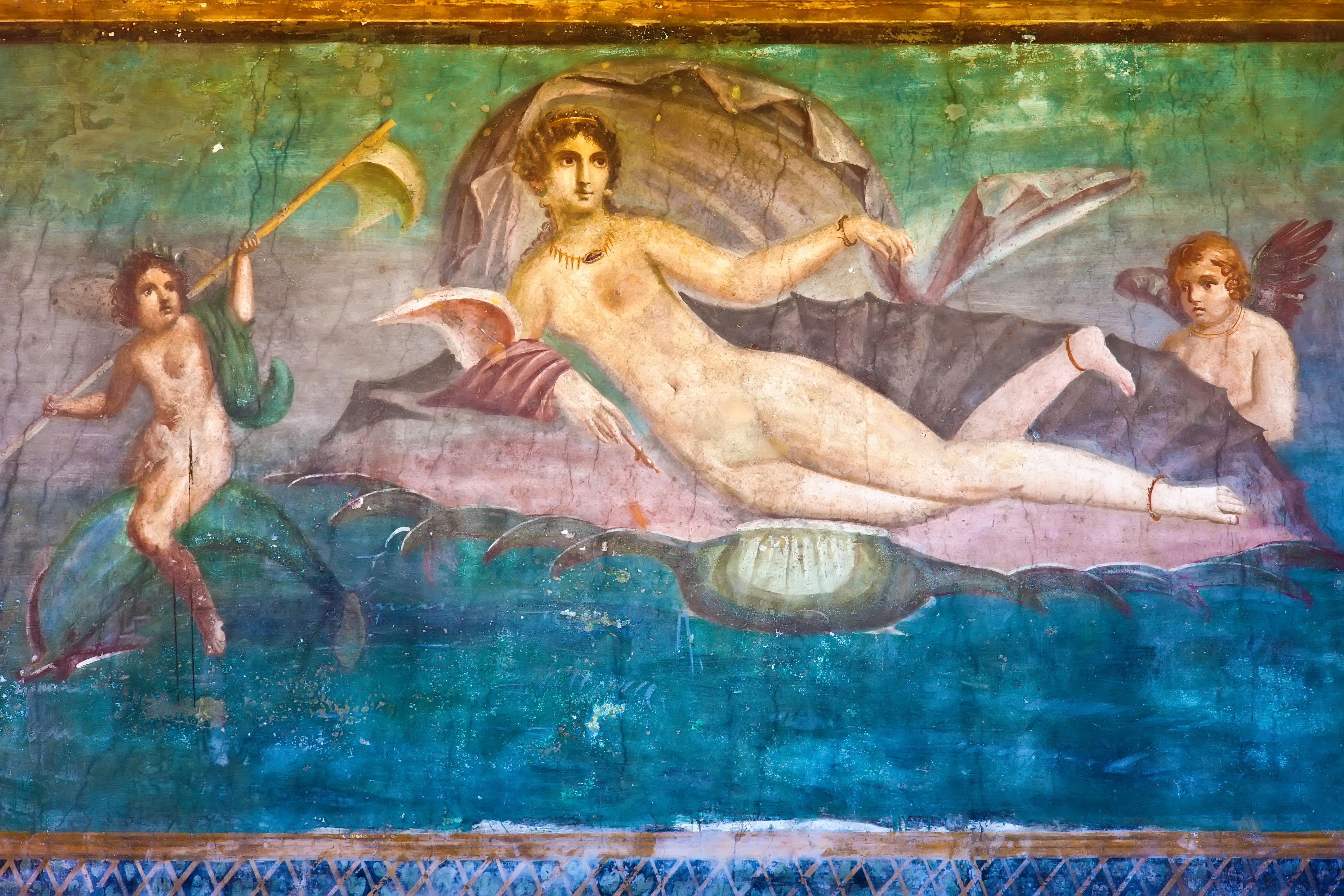
A polytheist always has favorites among the gods, determined by his own temperament, age, and condition, as well as his own interest, temporary or permanent. If it is true that everybody loves a lover, then Venus will be a popular deity with all. But from lovers she will elicit special devotion. In ancient Rome, when a young couple went out together to see a procession or other show, they would of course pay great respect to Venus, when her image appeared on the screen. Instead of saying, "Isn't love wonderful?" they would say, "Great art thou, O Venus." In a polytheistic society you could tell a good deal about a person's frame of mind by the gods he favored, so that to tell a girl you were trying to woo that you thought Venus overrated was hardly the way to win her heart. But in any case, a lovesick youth or maiden would be spontaneously supplicating Venus. The Greeks liked to present their deities in human form; it was natural to them to symbolize the gods as human beings glorified, idealized. But this fact is also capable of misleading us. We might suppose that the ancients were really worshipping only themselves; that they were, like Narcissus, beholding their own image in a pool, so that their worship was ~anthropocentric~ (man-centered) rather than ~theocentric~ (god-centered). We are in danger of assuming that they were simply constructing the god in their own image. This is not necessarily so. The gods must always be symbolized in one form or another. To give them a human form is one way of doing this, technically called ~anthropomorphism~ (from the Greek ~anthropos~, a man, and ~morphé~,form). People of certain temperaments and within certain types of culture seem to be more inclined to it than are others. It is, however, more noticeable in others than in oneself, and those who affect to despise it are sometimes conspicuous for their addiction to it. A German once said an Englishman's idea of God is an Englishman twelve feet tall. Such disparagement of anthropomorphism occurred in the ancient world, too. The Celts, for instance, despised Greek practice in this matter, preferring to use animals and other such symbols. The Egyptians favored more abstract and stylized symbols, among which a well-known example is the solar disk, a symbol of Rà, the sun-god. Professor C. S. Lewis tells of an Oxford undergraduate he knew who, priggishly despising the conventional images of God, thought he was overcoming anthropomorphism by thinking of the Deity as infinite vapor or smoke. Of course even the bearded-old-man image can be a better symbol of Deity than ever could be the image, even if this were psychologically possible, of an unlimited smog. What is really characteristic of all polytheism, however, is not the worship of idols or humanity or forests or stars; it is, rather, the worship of innumerable ~powers~ that confront and affect us. The powers are held to be valuable in themselves; that is why they are to be worshipped. But the values conflict. The gods do not cooperate, so you have to play them off against each other. Suppose you want rain. You know of two gods, the dry-god who sends drought and the wet-god who sends rain. You do not suppose that you can just pray to the wet-god to get busy, and simply ignore the dry-god. If you do so, the latter may be offended, so that no matter how hard the wet-god tries to oblige you, the dry-god will do his best to wither everything. Because both gods are powerful you must take both into consideration, begging the wet-god to be generous and beseeching the dry-god to stay his hand.
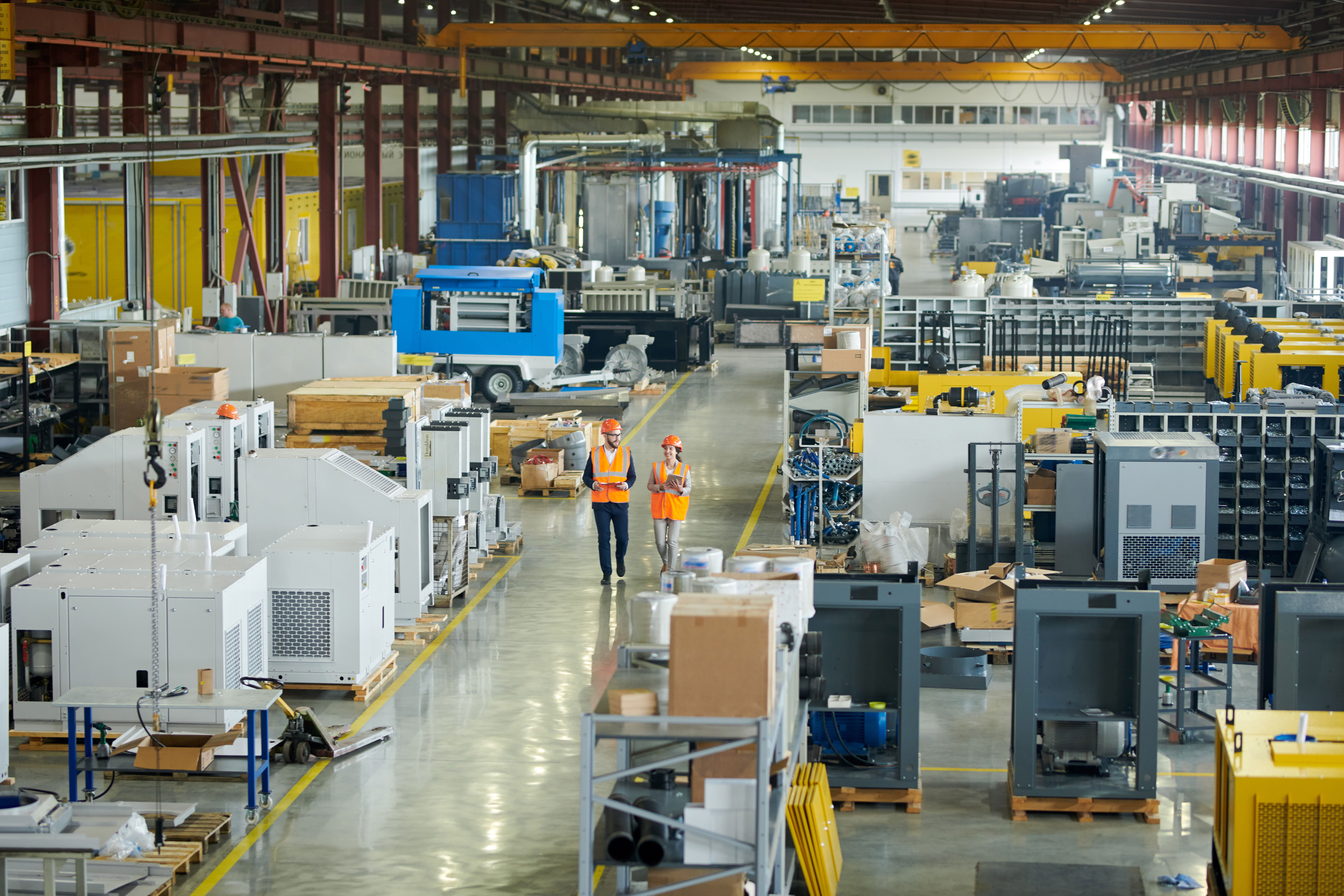
A newly issued report reveals in facts and figures what should have been known in principle, that quite a lot of business companies are going to go under during the coming decade, as tariff walls are progressively dismantled. Labor and capital valued at $12 billion are to be made idle through the impact of duty-free imports. As a result, 35,000 workers will be displaced. Some will move to other jobs and other departments within the same firm. Around 15,000 will have to leave the firm now employing them and work elsewhere. The report is measuring exclusively the influence of free trade with Europe. The authors do not take into account the expected expansion of production over the coming years. On the other hand, they are not sure that even the export predictions they make will be achieved. For this presupposes that a suitable business climate lets the pressure to increase productivity materialize. There are two reasons why this scenario may not happen. The first one is that industry on the whole is not taking the initiatives necessary to adapt fully to the new price situation it will be facing as time goes by. This is another way of saying that the manufacturers do not realize what lies ahead. The government is to blame for not making the position absolutely clear. It should be saying that in ten years' time tariffs on all industrial goods imported from Europe will be eliminated. There will be no adjustment assistance for manufacturers who cannot adapt to this situation. The second obstacle to adjustment is not stressed in the same way in the report; it is the attitude of the service sector. Not only are service industries unaware that the Common Market treaty concerns them too, they are artificially insulated from the physical pressures of international competition. The manufacturing sector has been forced to apply its nose to the grindstone for some time now, by the increasingly stringent import-liberalization program. The ancillary services on which the factories depend show a growing indifference to their work obligations. They seem unaware that overmanned ships, underutilized container equipment in the ports, and repeated work stoppages slow the country's attempts to narrow the trade gap. The remedy is to cut the fees charged by these services so as to reduce their earnings min exactly the same way that earnings in industrial undertakings are reduced by the tariff reduction program embodied in the treaty with the European Community. There is no point in dismissing 15,000 industrial workers from their present jobs during the coming ten years if all the gain in productivity is wasted by costly harbor, transport, financial, administrative and other services. The free trade treaty is their concern as well. Surplus staff should be removed, if need be, from all workplaces, not just from the factories. Efficiency is everybody's business.

In Scholasticism and Politics, written during World War II, Maritain expressed discouragement at the pessimism and lack of self-confidence characteristic of the Western democracies, and in the postwar world he joined enthusiastically in the resurgence of that confidence. While stopping short of asserting that democracy as a political system flowed directly from correct philosophical principles, he nonetheless dismissed Fascism and Communism as inherently irrational. Bourgeois individualism was, however, implicitly immoral and, by breaking down all sense of community and shared moral values, would inevitably end in some form of statism: order imposed from above.
In Integral Humanism (1936) and later works, he developed a systematic critique of the prevailing modern political ideologies and argued that a workable political order, which might appropriately be democracy, depended on a correct understanding of human nature and of natural moral law. Maritain became something of an Americanophile, seeking to counter not only what he regarded as European misconceptions about America but also the Americans' own self-deprecation.
In Reflections on America (1958), he argued that Americans were not really materialistic but were the most idealistic people in the world, although theirs was an idealism often unformed and lacking in philosophical bases. America, he thought, offered perhaps the best contemporary prospect for the emergence of a truly Christian civilization, based not on governmental decree but on the gradual realization of Christian values on the part of a majority of the population. American saints were coming, he predicted. But his postulation of a possible Christian civilization in America did not in any way temper his optimistic political liberalism|ma facet of his thought which caused him to be held in suspicion by some of his fellow Catholics in the 1950s. The Dominican chaplain at Princeton, for example, refused to allow him to address the Catholic students. (One of the exquisite ironies of recent Catholic history was that Maritain in his last books was acerbically critical of secularizing priests, while the Dominican chaplain resigned from the priesthood and ended his days as a real estate salesman in Florida.)No doubt in part because of Raïssa's background, Maritain had an enduring interest in anti-Semitism, which he analyzed and criticized in two books, and he was one of the principal influences in the effort to establish better Jewish-Catholic relations. Racism he regarded as America's most severe flaw. As early as 1958 he was praising Martin Luther King, Jr., and the Chicago neighborhood organizer Saul Alinsky. Maritain and, to a lesser extent, Gilson provided the program for a bold kind of Catholic intellectuality|man appropriation of medieval thought for modern use, not so much a medieval revival as a demonstration of the perennial relevance of the medieval philosophical achievement. The modern mind was to be brought back to its Catholic roots, not by the simple disparagement of modernity or by emphasis on the subjective necessity of faith, but by a rigorous and demanding appeal to reason. In the process, Scholastic principles would be applied in new and often daring ways. In the end the gamble failed. Despite promising signs in the 1940s, secular thinkers did not finally find the Scholastic appeal persuasive. And, as is inevitable when an intellectual community is dominated so thoroughly by a single system of thought, a restiveness was building up in Catholic circles. Although Maritain insisted that Thomism, because of the central importance it gave to the act of existence, was the true existentialism, Catholic intellectuals of the 1950s were attracted to the movement which more usually went by that name; and Gabriel Marcel, a Catholic existentialist of the same generation as Gilson and Maritain, was available to mediate between faith and anguish. Catholic colleges in America were hospitable to existentialist and phenomenological currents at a time when few secular institutions were, and what Catholics sought there was primarily a philosophy which was serious about the metaphysical questions of existence, yet not as rationalistic, rigid, and abstract as Scholasticism often seemed to be.
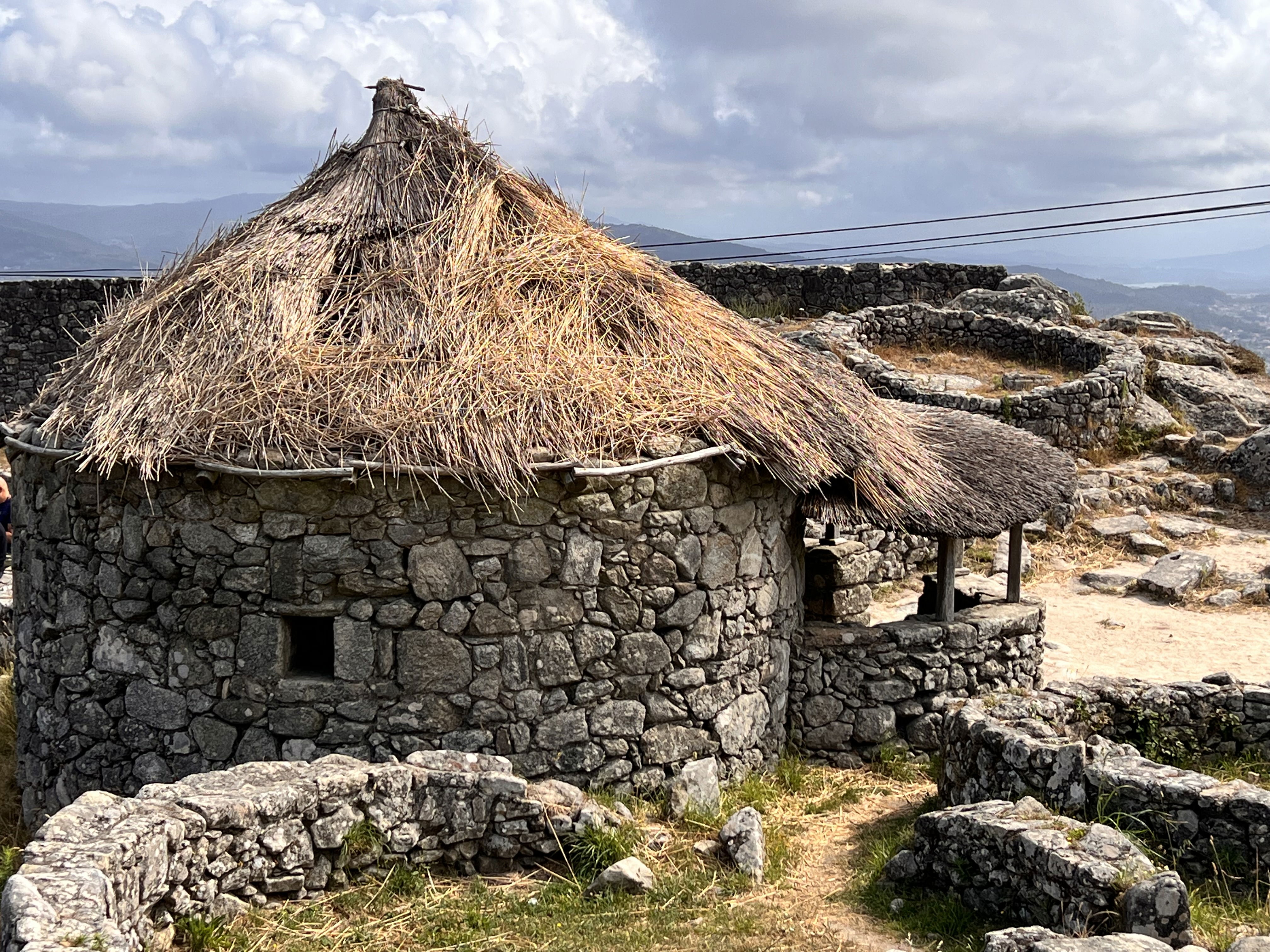
There is evidence of agriculture in Africa prior to 3000 B.C. It may have developed independently, but many scholars believe that the spread of agriculture and iron throughout Africa linked it to the major centers of the Near East and Mediterranean world. The drying up of what is now the Sahara desert had pushed many peoples to the south into sub-Saharan Africa. These peoples settled at first in scattered hunting-and-gathering bands, although in some places near lakes and rivers, people who fished, with a more secure food supply, lived in larger population concentrations. Agriculture seems to have reached these people from the Near East, since the first domesticated crops were millets and sorghums whose origins are not African but West Asian. Once the idea of planting diffused, Africans began to develop their own crops, such as certain varieties of rice, and they demonstrated a continued receptiveness to new imports. The proposed areas of the domestication of African crops lie in a band that extends from Ethiopia across southern Sudan to West Africa. Subsequently, other crops, such as bananas, were introduced from Southeast Asia.
Livestock also came from outside Africa. Cattle were introduced from Asia, as probably were domestic sheep and goats. Horses were apparently introduced by the Hyksos invaders of Egypt (1780–1560 B.C.) and then spread across the Sudan to West Africa. Rock paintings in the Sahara indicate that horses and chariots were used to traverse the desert and that by 300–200 B.C., there were trade routes across the Sahara. Horses were adopted by peoples of the West African savannah, and later their powerful cavalry forces allowed them to carve out large empires. Finally, the camel was introduced around the first century A.D. This was an important innovation, because the camel’s ability to thrive in harsh desert conditions and to carry large loads cheaply made it an effective and efficient means of transportation. The camel transformed the desert from a barrier into a still difficult, but more accessible, route of trade and communication.
Iron came from West Asia, although its routes of diffusion were somewhat different than those of agriculture. Most of Africa presents a curious case in which societies moved directly from a technology of stone to iron without passing through the intermediate stage of copper or bronze metallurgy, although some early copper-working sites have been found in West Africa. Knowledge of iron making penetrated into the forests and savannahs of West Africa at roughly the same time that iron making was reaching Europe. Evidence of iron making has been found in Nigeria, Ghana, and Mali.
This technological shift caused profound changes in the complexity of African societies. Iron represented power. In West Africa the blacksmith who made tools and weapons had an important place in society, often with special religious powers and functions. Iron hoes, which made the land more productive, and iron weapons, which made the warrior more powerful, had symbolic meaning in a number of West African societies. Those who knew the secrets of making iron gained ritual and sometimes political power.
Unlike in the Americas, where metallurgy was a very late and limited development, Africans had iron from a relatively early date, developing ingenious furnaces to produce the high heat needed for production and to control the amount of air that reached the carbon and iron ore necessary for making iron. Much of Africa moved right into the Iron Age, taking the basic technology and adapting it to local conditions and resources. 6. The diffusion of agriculture and later of iron was accompanied by a great movement of people who may have carried these innovations. These people probably originated in eastern Nigeria. Their migration may have been set in motion by an increase in population caused by a movement of peoples fleeing the desiccation, or drying up, of the Sahara. They spoke a language, proto-Bantu (“bantu” means “the people”), which is the parent tongue of a large number of Bantu languages still spoken production and to control the amount of air that reached the carbon and iron ore necessary for making iron. Much of Africa moved right into the Iron Age, taking the basic technology and adapting it to local conditions and resources.
The diffusion of agriculture and later of iron was accompanied by a great movement of people who may have carried these innovations. These people probably originated in eastern Nigeria. Their migration may have been set in motion by an increase in population caused by a movement of peoples fleeing the desiccation, or drying up, of the Sahara. They spoke a language, proto-Bantu (“bantu” means “the people”), which is the parent tongue of a large number of Bantu languages still spoken throughout sub-Saharan Africa. Why and how these people spread out into central and southern Africa remains a mystery, but archaeologists believe that their iron weapons allowed them to conquer their hunting-gathering opponents, who still used stone implements. Still, the process is uncertain, and peaceful migration—or simply rapid demographic growth—may have also caused the Bantu explosion.
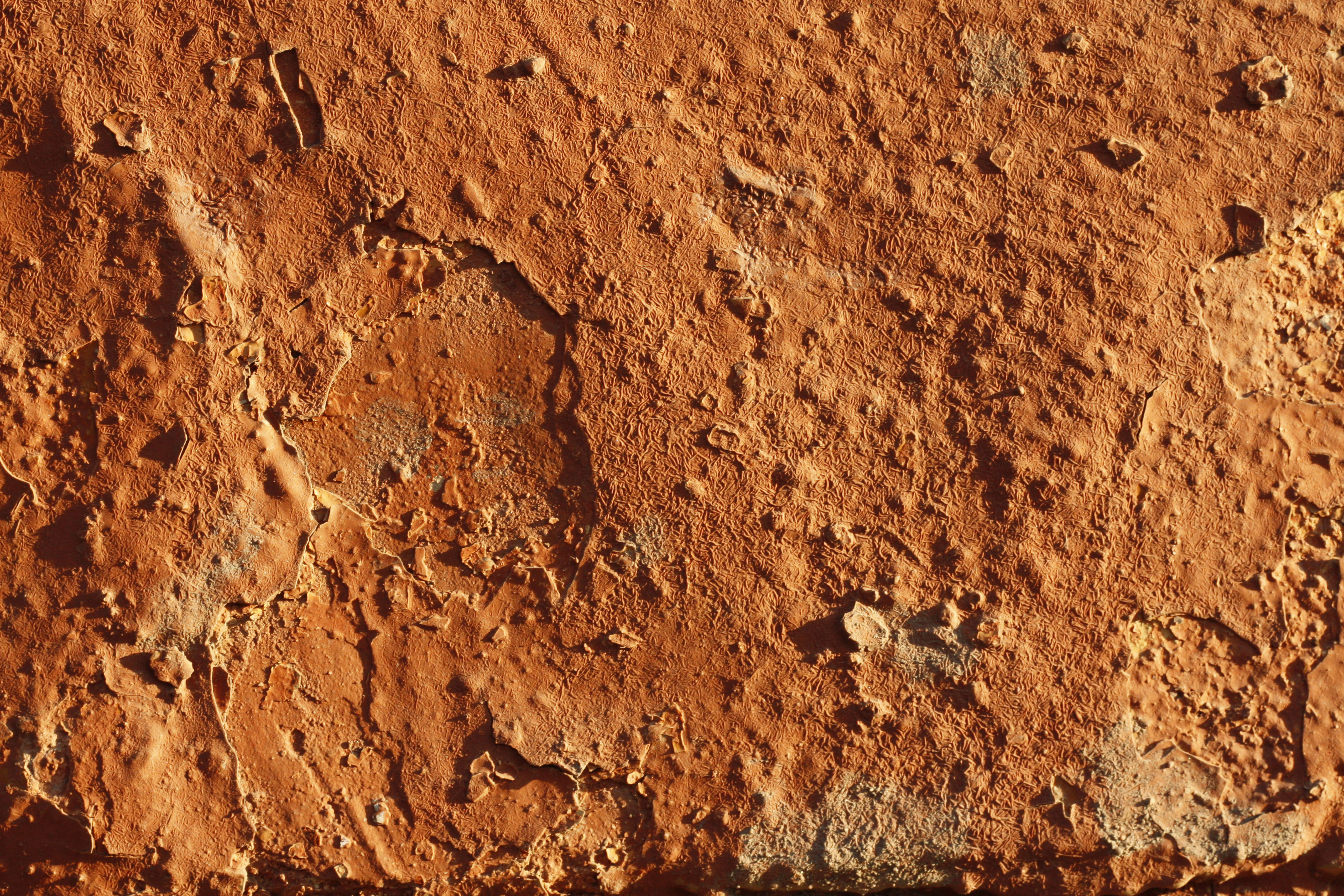
Photographic evidence suggests that liquid water once existed in great quantity on the surface of Mars. Two types of flow features are seen: runoff channels and outflow channels. Runoff channels are found in the southern highlands. These flow features are extensive systems—sometimes hundreds of kilometers in total length— of interconnecting, twisting channels that seem to merge into larger, wider channels. They bear a strong resemblance to river systems on Earth, and geologists think that they are dried-up beds of long-gone rivers that once carried rainfall on Mars from the mountains down into the valleys. Runoff channels on Mars speak of a time 4 billion years ago (the age of the Martian highlands), when the atmosphere was thicker, the surface warmer, and liquid water widespread.
Outflow channels are probably relics of catastrophic flooding on Mars long ago. They appear only in equatorial regions and generally do not form extensive interconnected networks. Instead, they are probably the paths taken by huge volumes of water draining from the southern highlands into the northern plains. The onrushing water arising from these flash floods likely also formed the odd teardrop shaped “islands” (resembling the miniature versions seen in the wet sand of our beaches at low tide) that have been found on the plains close to the ends of the outflow channels. Judging from the width and depth of the channels, the flow rates must have been truly enormous—perhaps as much as a hundred times greater than the 105 tons per second carried by the great Amazon river. Flooding shaped the outflow channels approximately 3 billion years ago, about the same time as the northern volcanic plains formed.
Some scientists speculate that Mars may have enjoyed an extended early period during which rivers, lakes, and perhaps even oceans adorned its surface. A 2003 Mars Global Surveyor image shows what mission specialists think may be a delta—a fan-shaped network of channels and sediments where a river once flowed into a larger body of water, in this case a lake filling a crater in the southern highlands. Other researchers go even further, suggesting that the data provide evidence for large open expanses of water on the early Martian surface. A computer generated view of the Martian north polar region shows the extent of what may have been an ancient ocean covering much of the northern lowlands. The Hellas Basin, which measures some 3,000 kilometers across and has a floor that lies nearly 9 kilometers below the basin’s rim, is another candidate for an ancient Martian sea.
These ideas remain controversial. Proponents point to features such as the terraced “beaches” shown in one image, which could conceivably have been left behind as a lake or ocean evaporated and the shoreline receded. But detractors maintain that the terraces could also have been created by geological activity, perhaps related to the geologic forces that depressed the Northern Hemisphere far below the level of the south, in which case they have nothing whatever to do with Martian water. Furthermore, Mars Global Surveyor data released in 2003 seem to indicate that the Martian surface contains too few carbonate rock layers— layers containing compounds of carbon and oxygen—that should have been formed in abundance in an ancient ocean. Their absence supports the picture of a cold, dry Mars that never experienced the extended mild period required to form lakes and oceans. However, more recent data imply that at least some parts of the planet did in fact experience long periods in the past during which liquid water existed on the surface.
Aside from some small-scale gullies (channels) found since 2000, which are inconclusive, astronomers have no direct evidence for liquid water anywhere on the surface of Mars today, and the amount of water vapor in the Martian atmosphere is tiny. Yet even setting aside the unproven hints of ancient oceans, the extent of the outflow channels suggests that a huge total volume of water existed on Mars in the past. Where did all the water go? The answer may be that virtually all the water on Mars is now locked in the permafrost layer under the surface, with more contained in the planet’s polar caps.

There is a quality of cohesiveness about the Roman world that applied neither to Greece nor perhaps to any other civilization, ancient or modern. Like the stones of a Roman wall, which were held together both by the regularity of the design and by that peculiarly powerful Roman cement, so the various parts of the Roman realm were bonded into a massive, monolithic entity by physical, organizational, and psychological controls. The physical bonds included the network of military garrisons, which were stationed in every province, and the network of stone-built roads that linked the provinces with Rome. The organizational bonds were based on the common principles of law and administration and on the universal army of officials who enforced common standards of conduct. The psychological controls were built on fear and punishment—on the absolute certainty that anyone or anything that threatened the authority of Rome would be utterly destroyed.
The source of the Roman obsession with unity and cohesion may well have lain in the pattern of Rome’s early development. Whereas Greece had grown from scores of scattered cities, Rome grew from one single organism. While the Greek world had expanded along the Mediterranean Sea lanes, the Roman world was assembled by territorial conquest. Of course, the contrast is not quite so stark: in Alexander the Great the Greeks had found the greatest territorial conqueror of all time; and the Romans, once they moved outside Italy, did not fail to learn the lessons of sea power. Yet the essential difference is undeniable. The key to the Greek world lay in its high-powered ships; the key to Roman power lay in its marching legions. The Greeks were wedded to the sea; the Romans, to the land. The Greek was a sailor at heart; the Roman, a landsman.
Certainly, in trying to explain the Roman phenomenon, one would have to place great emphasis on this almost animal 48 instinct for the territorial imperative. Roman priorities lay in the organization, exploitation, and defense of their territory. In all probability it was the fertile plain of Latium, where the Latins who founded Rome originated, that created the habits and skills of landed settlement, landed property, landed economy, landed administration, and a land-based society. From this arose the Roman genius for military organization and orderly government. In turn, a deep attachment to the land, and to the stability which rural life engenders, fostered the Roman virtues: gravitas, a sense of responsibility, peitas, a sense of devotion to family and country, and iustitia, a sense of the natural order.
Modern attitudes to Roman civilization range from the infinitely impressed to the thoroughly disgusted. As always, there are the power worshippers, especially among historians, who are predisposed to admire whatever is strong, who feel more attracted to the might of Rome than to the subtlety of Greece. At the same time, there is a solid body of opinion that dislikes Rome. For many, Rome is at best the imitator and the continuator of Greece on a larger scale. Greek civilization had quality; Rome, mere quantity. Greece was original; Rome, derivative. Greece had style; Rome had money. Greece was the inventor; Rome, the research and development division. Such indeed was the opinion of some of the more intellectual Romans. “Had the Greeks held novelty in such disdain as we,” asked Horace in his Epistles, “what work of ancient date would now exist?”
Rome’s debt to Greece was enormous. The Romans adopted Greek religion and moral philosophy. In literature, Greek writers were consciously used as models by their Latin successors. It was absolutely accepted that an educated Roman should be fluent in Greek. In speculative philosophy and the sciences, the Romans made virtually no advance on early achievements.
Yet it would be wrong to suggest that Rome was somehow a junior partner in Greco Roman civilization. The Roman genius was projected into new spheres—especially into those of law, military organization, administration, and engineering. Moreover, the tensions that arose within the Roman state produced literary and artistic sensibilities of the highest order. It was no accident that many leading Roman soldiers and statesmen were writers of high caliber

The economic condition of the low-income regions of the world is one of the great problems of our time. Their progress is important to the high-income countries, not only for humanitarian and political reasons but also because rapid economic growth in the low income countries could make a substantial contribution to the expansion and prosperity of the world economy as a whole. The governments of most high-income countries have in recent years undertaken important aid programs, both bilaterally and multilaterally, and have thus demonstrated their interest in the development of low-income countries. They have also worked within the General Agreement on Tariffs and Trade (GATT) for greater freedom of trade and, recognizing the special problems of low-income countries, have made special trading arrangements to meet their needs. But a faster expansion of trade with high-income countries is necessary if the low-income countries are to enjoy a satisfactory rate of growth. This statement is therefore concerned with the policies of high-income countries toward their trade with low-income countries. Our recommendations are based on the conviction that a better distribution of world resources and a more rational utilization of labor are in the general interest. A liberal policy on the part of high-income countries with respect to their trade with low-income countries will not only be helpful to the low-income countries but, when transitional adjustments have taken place, beneficial to the high-income countries as well. It is necessary to recognize however, that in furthering the development of low-income countries, the high-income countries can play only a supporting role. If development is to be successful, the main effort must necessarily be made by the people of the low-income countries. The high-income countries are, moreover, likely to provide aid and facilitate trade more readily and extensively where the low-income countries are seen to be making sound and determined efforts to help themselves, and thus to be making effective use of their aid and trade opportunities. It is, then, necessary that the low-income countries take full account of the lessons that have been learned from the experience of recent years, if they wish to achieve successful development and benefit from support from high-income countries. Among the most important of these lessons are the following: Severe damage has been done by inflation. A sound financial framework evokes higher domestic savings and investment as well as more aid and investment from abroad. Budgetary and monetary discipline and a more efficient financial and fiscal system help greatly to mobilize funds for investment and thereby decisively influence the rate of growth. Foreign aid should also be efficiently applied to this end. The energies of the people of low-income countries are more likely to be harnessed to the task of economic development where the policies of their governments aim to offer economic opportunity for all and to reduce excessive social inequalities. Development plans have tended to concentrate on industrial investment. The growth of industry depends, however, on concomitant development in agriculture. A steady rise in productivity on the farms, where in almost all low-income countries a majority of the labor force works, is an essential condition of rapid over-all growth. Satisfactory development of agriculture is also necessary to provide an adequate market for an expanding industrial sector and to feed the growing urban population without burdening the balance of payments with heavy food imports. Diminishing surpluses in the high-income countries underline the need for a faster growth of agricultural productivity in low-income countries. Success in this should, moreover, lead to greater trade in agricultural products among the low-income countries themselves as well as to increased exports of some agricultural products to the high-income countries. There can be no doubt about the urgency of the world food problem. Adequate nourishment and a balanced diet are not only necessary for working adults but are crucial for the mental and physical development of growing children. Yet, in a number of low-income countries where the diet is already insufficient the production of food has fallen behind the increase in population. A continuation of this trend must lead to endemic famine. The situation demands strenuous efforts in the low-income countries to improve the production, preservation, and distribution of food so that these countries are better able to feed themselves.

It is indisputable that in order to fulfill its many functions, water should be clean and biologically valuable. The costs connected with the provision of biologically valuable water for food production with the maintenance of sufficiently clean water, therefore, are primarily production costs. Purely "environmental" costs seem to be in this respect only costs connected with the safeguarding of cultural, recreational and sports functions which the water courses and reservoirs fulfill both in nature and inhuman settlements. The pollution problems of the atmosphere resemble those of the water only partly. So far, the supply of air has not been deficient as was the case with water, and the dimensions of the air-shed are so vast that a number of people still hold the opinion that air need not be economized. However, scientific forecasts have shown that the time may be already approaching when clear and biologically valuable air will become problem No. 1. Air being ubiquitous, people are particularly sensitive about any reduction in the quality of the atmosphere, the increased contents of dust and gaseous exhalations, and particularly about the presence of odors. The demand for purity of atmosphere, therefore, emanates much more from the population itself than from the specific sectors of the national economy affected by a polluted or even biologically aggressive atmosphere. The households' share in atmospheric pollution is far bigger than that of industry which, in turn, further complicates the economic problems of atmospheric purity. Some countries have already collected positive experience with the reconstruction of whole urban sectors on the basis of new heating appliances based on the combustion of solid fossil fuels; estimates of the economic consequences of such measures have also been put forward. In contrast to water, where the maintenance of purity would seem primarily to be related to the costs of production and transport, a far higher proportion of the costs of maintaining the purity of the atmosphere derives from environmental considerations. Industrial sources of gaseous and dust emissions are well known and classified; their location can be accurately identified, which makes them controllable. With the exception, perhaps, of the elimination of sulphur dioxide, technical means and technological processes exist which can be used for the elimination of all excessive impurities of the air from the various emissions. Atmospheric pollution caused by the private property of individuals (their dwellings, automobiles, etc.) is difficult to control. Some sources such as motor vehicles are very mobile, and they are thus capable of polluting vast territories. In this particular case, the cost of anti-pollution measures will have to be borne, to a considerable extent, by individuals, whether in the form of direct costs or indirectly in the form of taxes, dues, surcharges, etc. The problem of noise is a typical example of an environmental problem which cannot be solved only passively, i.e., merely by protective measures, but will require the adoption of active measures, i.e., direct interventions at the source. The costs of a complete protection against noise are so prohibitive as to make it unthinkable even in the economically most developed countries. At the same time it would not seem feasible, either economically or politically, to force the population to carry the costs of individual protection against noise, for example, by reinforcing the sound insulation of their homes. A solution of this problem probably cannot be found in the near future.

With Friedrich Engels, Karl Marx in 1848 published the ~Communist Manifesto~, calling upon the masses to rise and throw off their economic chains. His maturer theories of society were later elaborated in his large and abstruse work ~Das Capital~. Starting as a non-violent revolutionist, he ended life as a major social theorist more or less sympathetic with violent revolution, if such became necessary in order to change the social system which he believed to be frankly predatory upon the masses. On the theoretical side, Marx set up the doctrine of surplus value as the chief element in capitalistic exploitation. According to this theory, the ruling classes no longer employed military force primarily as a means to plundering the people. Instead, they used their control over employment and working conditions under the bourgeois capitalistic system for this purpose, paying only a bare subsistence wage to the worker while they appropriated all surplus values in the productive process. He further taught that the strategic disadvantage of the worker in industry prevented him from obtaining a fairer share of the earnings by bargaining methods and drove him to revolutionary procedures as a means to establishing his economic and social rights. This revolution might be peacefully consummated by parliamentary procedures if the people prepared themselves for political action by mastering the materialistic interpretation of history and by organizing politically for the final event. It was his belief that the aggressions of the capitalist class would eventually destroy the middle class and take over all their sources of income by a process of capitalistic absorption of industry|ma process which has failed to occur in most countries. With minor exceptions, Marx's social philosophy is now generally accepted by leftwing labor movements in many countries, but rejected by centrist labor groups, especially those in the United States. In Russia and other Eastern European countries, however, Socialist leaders adopted the methods of violent revolution because of the opposition of the ruling classes. Yet, many now hold that the present Communist regime in Russia and her satellite countries is no longer a proletarian movement based on Marxist social and political theory, but a camouflaged imperialistic effort to dominate the world in the interest of a new ruling class. It is important, however, that those who wish to approach Marx as a teacher should not be "buffaloed'' by his philosophic approach. They are very likely to in these days, because those most interested in propagating the ideas of Marx, the Russian Bolsheviks, have swallowed down his Hegelian philosophy along with his science of revolutionary engineering, and they look upon us irreverent peoples who presume to meditate social and even revolutionary problems without making our obeisance to the mysteries of Dialectic Materialism, as a species of unredeemed and well-nigh unredeemable barbarians. They are right in scorning our ignorance of the scientific ideas of Karl Marx and our indifference to them. They are wrong in scorning our distaste for having practical programs presented in the form of systems of philosophy. In that we simply represent a more progressive intellectual culture than that in which Marx received his education|ma culture farther emerged from the dominance of religious attitudes.


